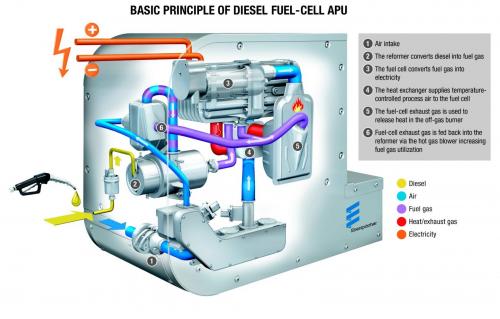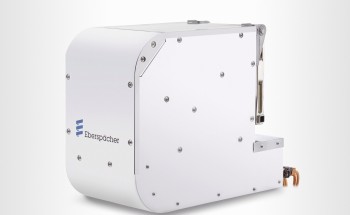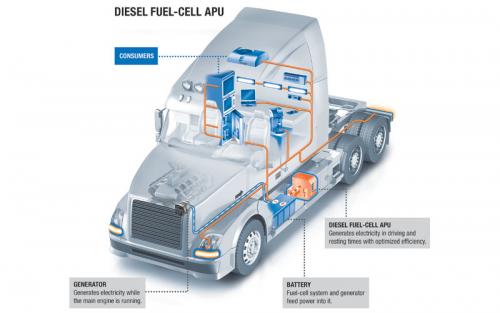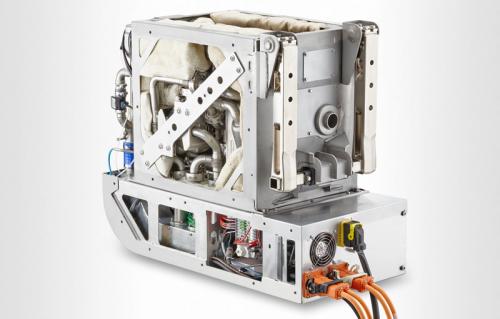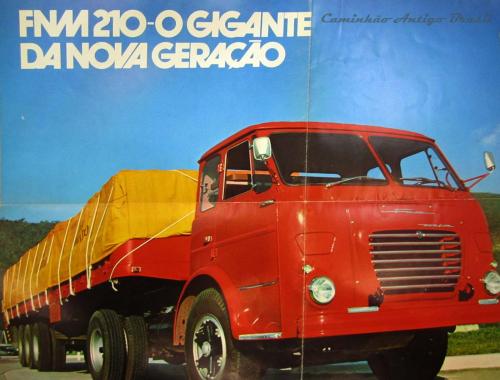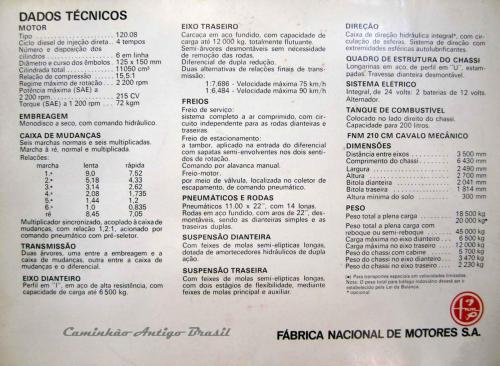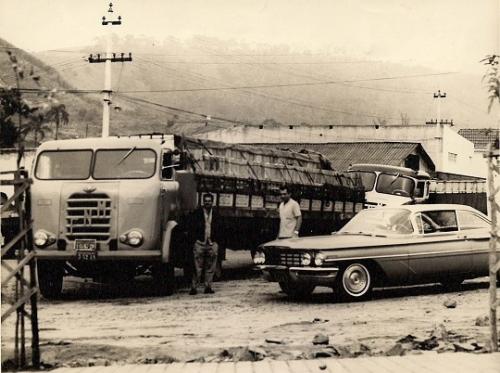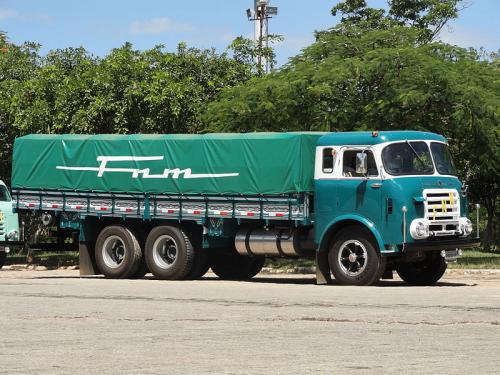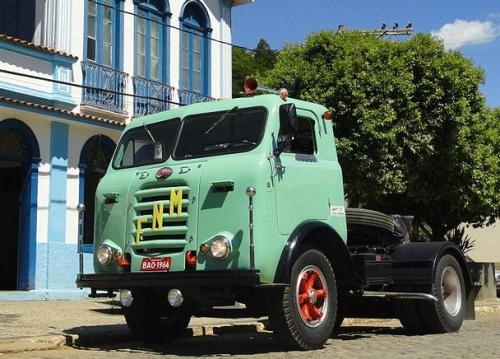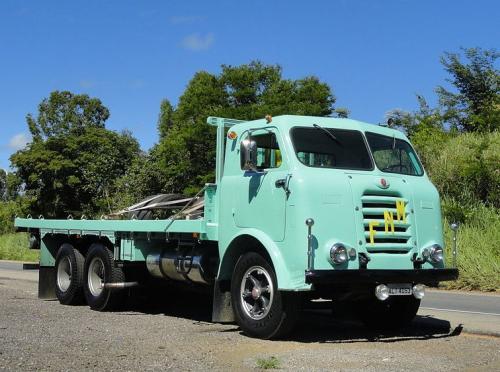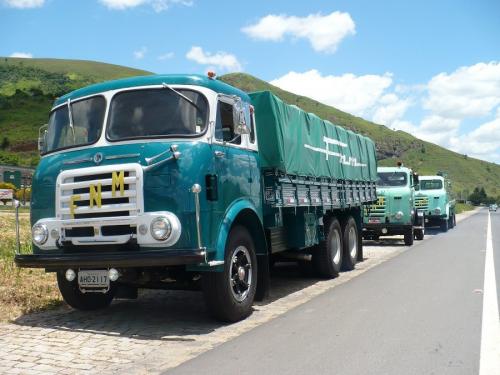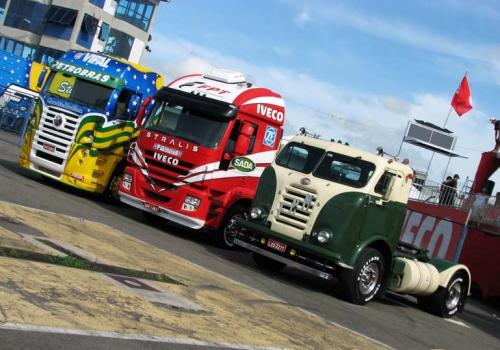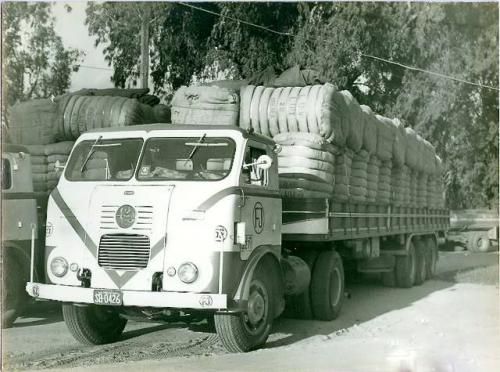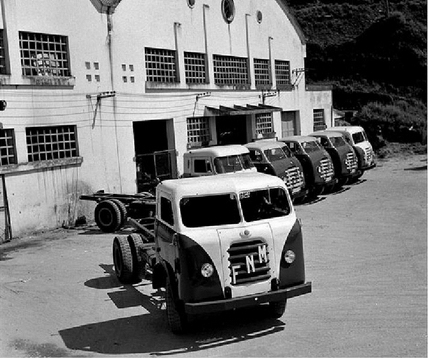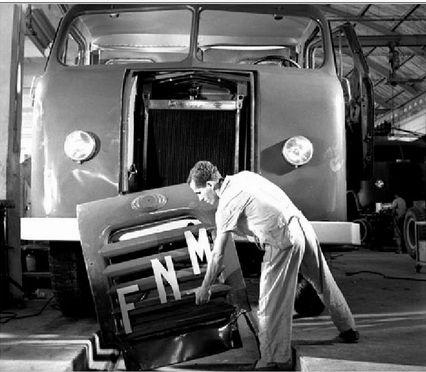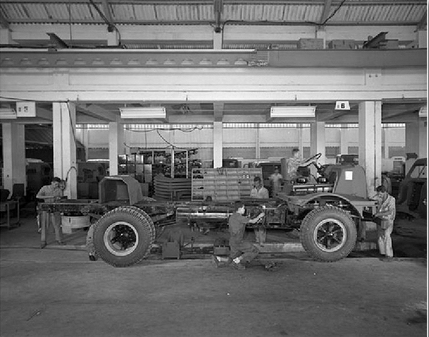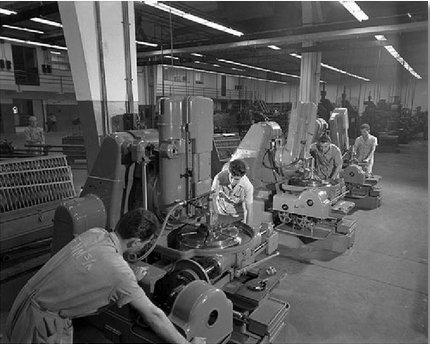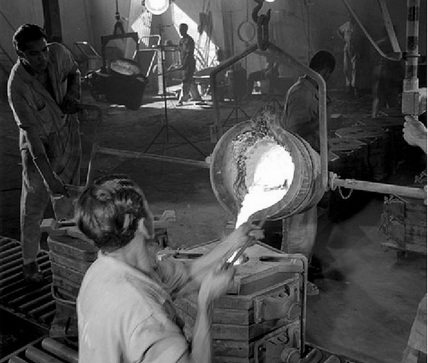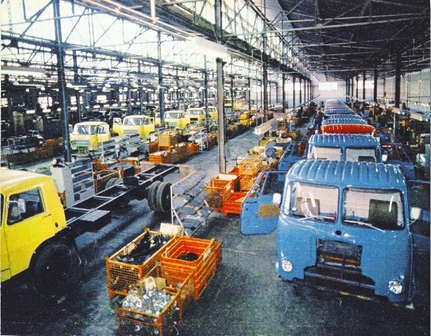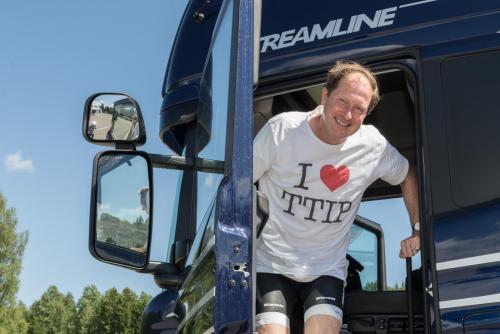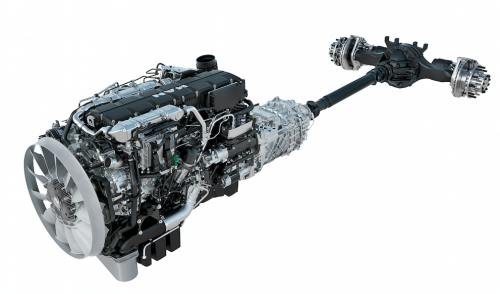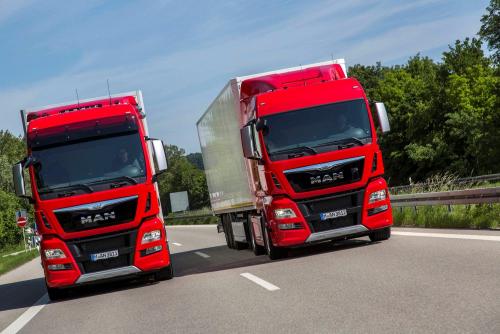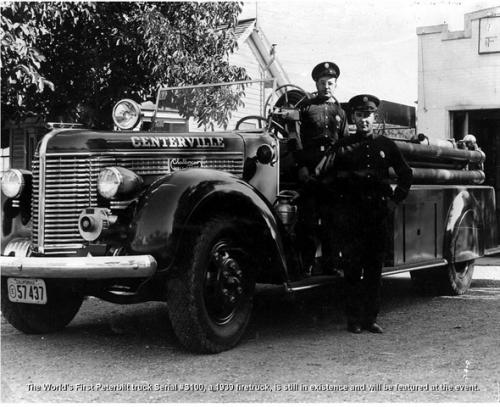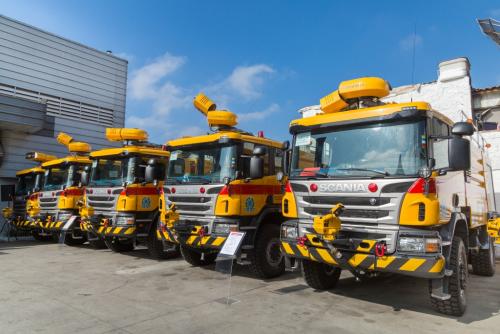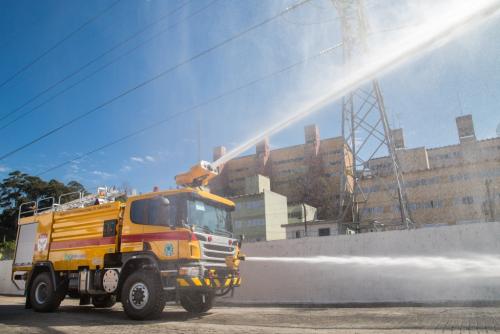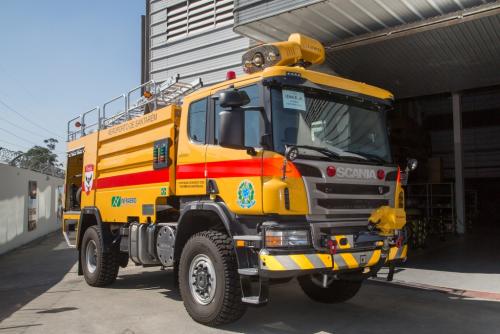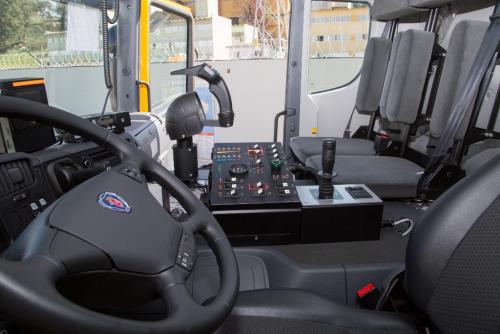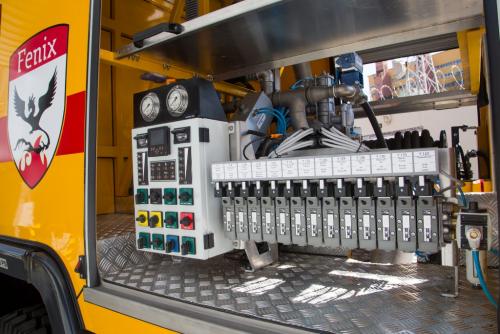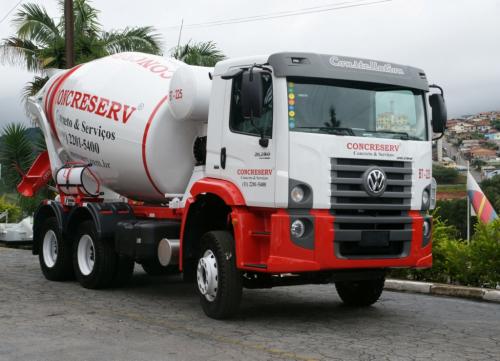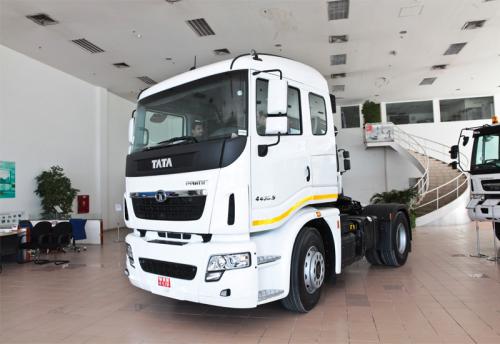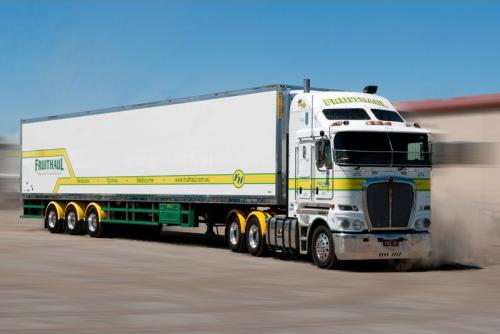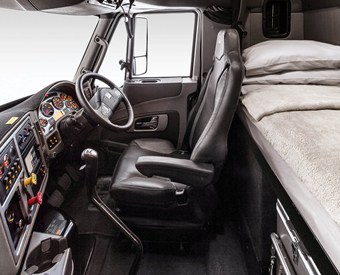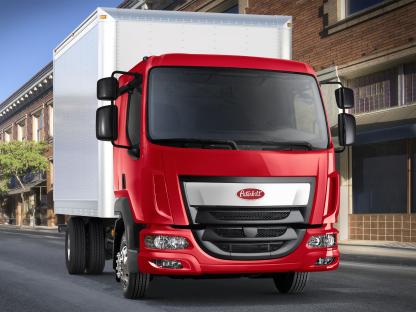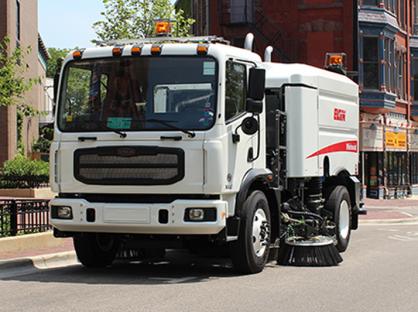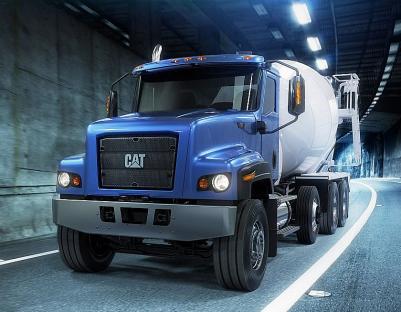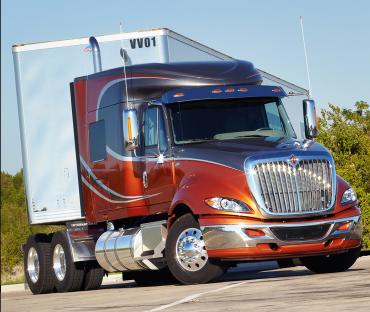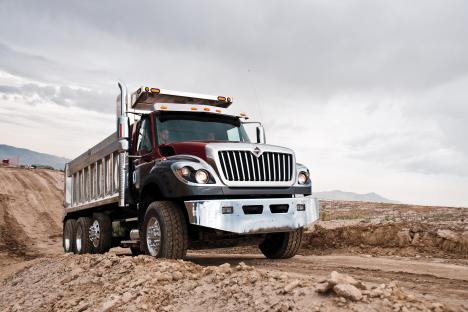
kscarbel2
Moderator-
Posts
18,876 -
Joined
-
Days Won
114
Content Type
Profiles
Forums
Gallery
Events
Blogs
BMT Wiki
Collections
Store
Everything posted by kscarbel2
-
Just to keep things in perspective, in the world of Ford, $100 million is a small investment. The 2013 annual report of KOC Holding, Ford's Turkish partner in the Ford-Otosan truckmaking joint-venture states: Ford Otosan is to invest US$ 100 million in the production of the new 11-liter and 13-liter Ecotorq engines. The intellectual property rights of the engines, designed by Ford Otosan engineers, belong to Ford Otosan. The new Ecotorq engines that will be manufactured at Euro 6 emission standards, are expected to have wide use including heavy commercial vehicles as well as industrial and marine applications. Apparently, Ford has purchased the old 10.3-liter Cursor 10 and old 12.7-liter Cursor 13 for its heavy Cargo range from Fiat Powertrain Technologies (FPT). Iveco has replaced the Cursor 10 with the 11.1-liter Cursor 11. The 12.7-liter Cursor 13 was found in agricultural machinery, while the 12.9-liter Cursor 13 is used in Iveco trucks. Fiat needs the money, so it's a win-win both ways. As for the U.S. market, Ford certainly has a better chance of re-entering the U.S. heavy truck market than Iveco does under the Dodge brand with their conventional Powerstar series (though it's an impressive truck). However, unless Ford buys International (to immediately obtain a heavy truck network), I don't feel the U.S. market is robust enough to support an additional heavy truck maker. The high point of the U.S. heavy truck market has passed. High volumes and profitability are a thing of the past.
-
Diesel News Australia / July 21, 2014 At the IAA International Truck Show in Hannover, Germany this September, German truck technology manufacturer, Eberspaecher, will be displaying a new diesel fuelled fuel cell system to provide power on board trucks. The new system uses diesel fuel to power a fuel cell, which in turn generates electricity which can be used to power ancillary equipment. The power supplied can be used to run air conditioning systems, fridges and any other equipment which requires electricity when the truck is stationary. The system also has the potential to provide even more power solutions, reducing the load on the generator attached to the engine. This will have the result of reducing parasitic power loss from the engine, increasing overall fuel efficiency. “Not only does our system solve the energy problem during stationary periods, rather, we’re pursuing a new, holistic approach to on-board power supply in the truck that, beside the environmental balance, also decisively enhances operating efficiency”, explains Dr. Klaus Beetz, COO Eberspaecher Climate Control Systems. The innovative fuel cell auxiliary power unit (APU) generates electrical power from the diesel in the truck tank quietly, in an energy-saving way and is virtually emissions-free. Eberspacher claim nitrogen oxide, carbon monoxide and soot particulate emissions are 90 per cent less compared with a diesel-engined auxiliary power unit (APU). .
-
Heavy Duty Trucking / July 21, 2014 Volvo Group, the parent of Volvo Trucks North America, has been ordered to pay penalties and interest of approximately $74.1 million to the U.S. Environmental Protection Agency regarding emission compliance of the company’s marine diesel engines. The U.S. Court of Appeals for the District of Columbia Circuit affirmed a District Court’s ruling that model year 2005 Volvo Penta engines violated the provisions of a consent decree. Volvo says the engines in question are not on-highway engines and should not be covered by the decree. This is expected to have a negative impact on the group’s operating income of approximately $64 million in the third quarter, according to the company. In 2012 the District Court issued a judgment ordering the Volvo Group to pay penalties and interest for engines which Volvo claims were not part of the decree. Volvo filed an appeal on several grounds. The company said it is reviewing the ruling in detail, and will consider whether to appeal. In 1998, the EPA signed consent decrees with a number of manufacturers of heavy diesel engines for sale in the United States, including Volvo Truck. “The Volvo consent decree covered engines in highway vehicles but also covered certain engines in construction equipment,” said Kina Wileke, senior vice president, media relations, Volvo Group. “Volvo Penta was not made a party to the consent decree and Volvo did not consider Penta engines subject to the consent decree. Most of Volvo Penta’s engines manufactured during the relevant period were marine engines, which are not within the class of engines covered in the consent decree.” In addition, Wileka said Volvo Penta’s engines within the relevant size classifications are used primarily for industrial applications, for example stationary diesel generators, rather than in mobile sources as contemplated by the decree.
-
The FNM 180 and 210 series were launched in 1972 with 180 and 215 horsepower engines respectively. The 210 was available in both 4x2 and 6x4 configurations with the 215 horsepower model 120.08 in-line 6-cylinder diesel engine rated at 706 N.m of torque, and mated to a ZF 12-speed (6+2) transmission. GCWs went up to 45,000 kg. The 4x2 tractor rode on a 14,330 lb front axle and a 26,455 lb drive axle. Fiat bought a 43 percent stake in Alfa Romeo in 1973. With the purchase of additional shares in 1976, Fiat became Alfa Romeo’s controlling shareholder. Owing to these developments, FNM trucks from 1978 were badged as Fiats. More Photos: http://alfafnm.com/fotos1/ .
-
With production now ramping up at FNM, the company faced a new challenge when financial difficulties caused Isotta Fraschini to file for bankruptcy in 1951, leaving FNM in an awkward position after just a couple of years of cooperation. FNM found a new technology partner in the form of Milan-based Alfa Romeo, who at that time was a well respected heavy truck manufacturer in Southern Europe. From 1951, FNM began production of Alfa Romeo D-9500. Powered by a 130 horsepower engine, straight trucks had a GVW 17,857 lb and tractors had a GCW of 48,502 lb. Like FNM, Alfa Romeo at that time was also a government-owned company, having been rescued from bankruptcy by the Italian government in the 1930s. Between 1956 and 1960, FNM produced over 15,000 Alfa Romeo-based heavy trucks in Brazil, as well as buses and coaches. In 1958, FNM launched the D-11000. Based on the Alfa-Romeo 1000 series, it was initially powered by an 11-liter 150 horsepower engine, with power increased to 175 horsepower in 1967. Power was delivered by an 8-speed (4+2) transmission. was rated at 17,637-24,251 pounds and powered by a 163-174 horsepower 11-liter engine mated to an 8-speed (4+2) transmission. As Brazil’s only truckmaker until the early 1970s, FNM dominated the market. In 1968 when privatization was being encouraged, Alfa Romeo purchased FNM from the Brazilian government. .
-
FNM (Fábrica Nacional de Motores) was a Brazilian truckmaker in business from 1942 thru 1988. Located near Rio de Janeiro, the company was established by the Brazilian government to push forward the country’s industrial base. In exchange for the use of military bases in northeastern Brazil during World War II, the U.S. government provided financial and technical assistance towards the construction of the FNM plant. During the war years, the plant was charged with producing Curtiss-Wright engines for military training aircraft. Truck production began in 1949 after FNM signed an agreement with Italian truckmaker Isotta Fraschini to produce the latter company’s 16,535 GVW diesel trucks under license. The trucks were designated IF-D-7300 and approximately 200 units were built. .
-
Press Release / July 17, 2014 Mark Brzezinski, the US Ambassador to Sweden, visited Scania on July 17 as part of a program to promote the importance of the Transatlantic Trade and Investment Partnership (T-TIP) between the European Union and United States. Mark Brzezinski is the son of noted American statesman and United States Presidential National Security Advisor Zbigniew Brzezinski. In order to better understand Sweden’s export industry, Ambassador Brzezinski and a nine-person entourage are on a bicycle tour of central Sweden that is taking them from Gothenburg in the west to Stockholm in the east. Along the route they are visiting large and small companies for which export plays a vital role. On Thursday, the group arrived at Scania to discuss topics important to the automotive sector – emissions and road safety legislation issues and ways to harmonize these. Common emission legislation, for example, would make trade easier for companies on both sides of the Atlantic. This in turn requires common test cycles, something that was part of the discussions with Scania Executive Vice President Jan Ytterberg and Senior Vice President Erik Ljungberg. The group was also given an opportunity to test drive heavy vehicles at the Scania DemoCentre. “I have never had the opportunity to drive a truck before,” Ambassador Brzezinski said after the test drive. “They are very easy to drive, and it helps me to understand the precision with which drivers are capable of maneuvering their vehicles.” On the T-TIP, Scania’s Ljungberg commented: “For Scania, generally free trade decreases the need for extensive and expensive changes to our products and services. T-TIP specifically would facilitate our joint venture with the Cummins industrial group and our exports of, for example, engines to the US market.” Free trade is key to Scania’s future success and competitiveness, he continued. Currently Scania’s presence on the US Market is limited to industrial and marine engines and components for these. Should the Transatlantic Trade and Investment Partnership be realized, it would become the world’s largest free trade agreement, and many believe it would act as an injection into the world economy. It could also help to develop industrial standards with global precedence. .
-
- 1
-

-
CM422 with E5-240
kscarbel2 replied to Erickson5006's topic in Antique and Classic Mack Trucks General Discussion
When used as intended, the Mid-Liner MS300T 4x2 tractor was a great performer, particularly with the 10-speed splitter transmission. I had nothing but satisfied customers. -
Australasian Truck News / July 18, 2014 The MAN TGX has gained more grunt with a new D3876 15.2 litre engine to be launched at the 2014 Hannover IAA international truck show in September. Based on existing MAN engine architecture, the new D3876 powerplant will be available in horsepower ratings of 520, 540 and 640. The engine features MAN’s characteristic compact two-stage turbo charger which the company claims results in higher power density with lower fuel consumption. A high pressure common rail fuel injection system injects fuel into the combustion chamber with peak pressure of up to 2,500 bar. Interestingly the new engine is capable of delivering peak torque from just 930rpm. Torque ratings for the engine are 2,500 Nm for the 520hp, 2,700 Nm for the 560hp and 3,000 Nm for the 640hp. The engine is backed by a TipMatic 2 automated transmission (AMT) which will allow peak torque to be available in all gears. The new 6 cylinder engine is 160kg lighter than the previous Euro 5 V8 version, with the lighter weight coming from using a heavy duty plastic sump and valve cover as well as an aluminium flywheel housing. In a claimed first in truck engines by MAN, domed valves have been used to reduce flex while in operation and increase durability. The engine also features eight cylinder head nuts per cylinder and improved lubrication due to the use of fire rings to keep the cylinder clear of carbon deposits to increase durability. The TGX D38 will also be available with a full suite of safety and fuel efficiency features, some that were only previously found on other European competitors. The TipMatic2 transmission has a free-wheeling function for undulating country called EfficientRoll, this allows the engine to idle when the vehicle is rolling and pulling power is not required. A speed shift function now accelerates gear changes in the top three gears to maximise the amount of time spent in higher gears when climbing. To make the most of the torque of the D3876 engine an idle speed driving function allows the vehicle to move at idle in low speed or heavy traffic without the clutch disengaging and stopping the truck. A GPS cruise control that maps route terrain is now also a feature of the flagship MAN. EfficientCruise again tries to maximise time spent in higher gears to save fuel and increase vehicle performance. Emergency brake assist warns of an impending collision and applies the brakes of the truck if the vehicle is in danger of colliding with a stationary object in its lane. A lane guard function is also available to keep things between the white lines as well as adaptive cruise control. A new engine brake compliments the existing EVB set up with the introduction of the turbo EVB which is capable of providing up to 600Kw of engine braking power. European spec figures are currently quoting a GCM of up to 65 tonnes with a highway spec driveline. However, with specialised equipment added to the drive line the TGXD38 is capable of gross weights of up to 250 tonnes. .
-
- 1
-

-
Heavy Duty Trucking / July 16, 2014 Peterbilt plans to bring a large collection of new and historic trucks, memorabilia, vendors, and a charity raffle for a classic Model 359 to its anniversary show in Stockton, Calif. The 75th Anniversary Peterbilt Truck Show will feature approximately 400 show trucks representing milestone models from throughout the company’s history, a reunion luncheon of current and former employees, supplier and vendor exhibits, music, guest speakers, a charity raffle for a Model 359, and Peterbilt’s interactive anniversary tour trailer, hauled by a Model 579 Anniversary Edition truck. "This will be a very special event that will bring together everything that is essential to our 75 years of industry leadership, our customers, our employees and dealers, and our vehicles," said Darrin Siver, Peterbilt general manager and Paccar vice president."It will be a celebration of Peterbilt’s past, present, and future." For more information on the event, visit www.75thanniversary.org. .
-
Mack Defense on Social Media
kscarbel2 replied to MackDefense's topic in Modern Mack Truck General Discussion
The entire range of tactical vehicles promoted by Mack Defense is from France's Renault Trucks Defense (http://www.renault-trucks-defense.eu/), a wholly owned subsidiary of Sweden's Volvo Group since December 2012. The remaining logistical product line-up consists of ordinary civilian models painted beige or olive drab paint (MILCOTS - military commercial off the shelf). In the defense vehicle segment, the United States government to date continues to support American companies, including Oshkosh and Navistar.- 2 replies
-
- Mack Trucks
- Mack Defense
-
(and 4 more)
Tagged with:
-
Press Release / July 15, 2014 Scania and body manufacturer Lavrita Engineering have partnered to produce all-wheel-drive Scania P440-based airport rescue and fire fighting apparatus for Brazil’s airports. Called the CCI-AP2 Phoenix, the $45.7 million order is for 64 units. "Scania, with their 4x4 P440 chassis, was the only manufacturer able to meet our requirements” said Wilson Molina Ribas, technical director for Lavrita Engineering. "Our special equipment division offers the latest in airport fire fighting designs and technologies. This next-generation vehicle is a tool of utmost importance to the operations of airport security, the fire fighting aircraft missions, as well as the vicinity of airports." The 33 trucks delivered this first batch will be leased by SAC to airports in the cities of Alta Floresta (MT), Altamira (PA), Araguaína (TO), barriers (BA), Bonito (MS), Cacoal (RO), Caruaru (PE ), Southern Cross (AC), Fernando de Noronha (PE), Ilheus (BA), Empress (MA), Ji-Paraná (RO), Juazeiro do Norte (CE), Macapa (AP), Maraba (PA) Paulo Afonso (BA), Santarém (PA) Sinop (MT), Tabatinga (PM), Teffe (AM) and Vitória da Conquista (BA). The specialized Scania P440 4x4 cab and chassis is a platform long recognized by fire and rescue organizations around the globe for its extreme all-terrain capabilities. Lavrita Engineering designs, manufactures and assembles custom fire apparatus bodies utilizing equipment from Austria’s Rosenbauer including the latest in water pump and deck gun design. The JRC-AP2-Phoenix is capable of carrying over 6100 liters of water for foam production, 780 liter LGE (liquid foam generator) reservoirs and 200 kilograms of DCP (dry chemical powder). It is equipped with a 5,500 gpm pump, deck gun with a minimum range of 70 meters and a lower cannon with a minimum range of 46 meters. These vehicles operate only in case of emergencies must be able to accelerate from 0 to 80 km/h in less than 35 seconds, meeting international standards, with a top speed of 113 km/h. An Allison HD 4500 allows for simultaneous vehicle movement and pump operation, for enhanced firefighting speed and efficiency. Certified by the U.S. National Fire Protection Association (NFPA), U.S. Federal Aviation Administration, Canada’s International Civil Aviation Organization (ICAO) and Brazil’s National Civil Aviation Agency (ANAC), these trucks can operate at any airport in the Americas. .
-
- 1
-

-
Concreserv chooses Volkswagen trucks for mixer application
kscarbel2 posted a topic in Trucking News
Press Release / July 10, 2014 Brazil’s Concreserv, a major Brazilian ready mix operator, has expanded its fleet with the purchase of 40 Volkswagen model 26.280 vocational chassis. The company, which has recently invested $3.8 million in new equipment, chose Volkswagen’s Constellation heavy truck range to strengthen its future operations in the state of São Paulo, ranging from infrastructure construction to highway expansion. The order includes 21 VW Constellation 26.280 6x4 chassis fitted with mixer bodies or concrete boom pumps with a 36 meter vertical reach, 18 VW Constellation 31.280 8x4 mixer chassis with 10m ³ barrels, and a VW Constellation 13.190 4x2 with a stationary concrete pump. "Our strategy is to develop mixer chassis that are tailor-made for specific customer applications, which are equipped with advanced technology and work with operational productivity," says Ricardo Alouche, vice president of Sales, Marketing and After-Sales at MAN Latin America. "In our vocational range, we offer a robust line-up of severe service truck chassis offering low cost of operation and high up-time." Another advantage is that the Euro-5 emissions 280 horsepower 6.9-litrer MAN D0836 engines spec'd in these trucks does not require the use of AdBlue," says Alouche. MAN Latin America's Volkswagen commercial truck unit has increased sales for eleven consecutive years in Brazil and led the market in the first half of 2014 with 26.3 percent market share. Concreserv’s new Volkswagen mixers will support several major projects in São Paulo including the expansion of the monorail, subway lines and several highways such as the Mario Covas beltway. "Taking into account the increasing demand of construction in the State of São Paulo and the major chunk of the market gained by Concreserv, we have the growth expectations along with Volkswagen vehicles," says Paulo Ricardo, fleet manager of Concreserv. "To this end, fundamental factors such as robustness and productivity are paramount, and these are the striking features of VW brand," he added. Concreserv has also signed a contract maintenance agreement with MAN Latin America. The customer-tailored VOLKSTOTAL Plus maintenance program will provides preventive and corrective maintenance for the fleet, including 24 hour assistance, towing and vehicle tracking until trucks return to operation. With the VOLKSTOTAL Plus contract maintenance program, Concreserv knows what its costs will be to maintain the trucks throughout the contract period. . -
Construction Week / July 15, 2014 Boasting low price tags, high-end build specifications, and generous warranties, Tata is confident that its Prima truck range will put European competitors on the back foot. In an attempt to find out whether the Indian truck maker’s claims are justified, James Morgan speaks with the manufacturer, its UAE dealer, and the first Prima owner in the Middle East. On paper, Tata’s Prima range of trucks represents the stuff of nightmares for Europe’s premium-end manufacturers. Firstly, there’s the price. A brand new Prima 4x2 tractor head will cost UAE fleet operators approximately 40% less than an equivalent European model. Secondly, there’s the build quality, which Tata claims is comparable to that of its Western competitors. Thirdly – and perhaps most importantly – is the Prima’s warranty period, which spans either three years or 300,000km; whichever comes first. Whilst a number of Prima 4x2 tractor heads have already been sold in the UAE market, the full range of Prima trucks isn’t yet available in the Middle East; the Prima 6x4 and 8x4 rigid-frame tippers are scheduled to arrive in the region before the end of 2014. Eager to find out whether the range lives up to the bold claims of its manufacturer, I visited the showroom of United Diesel, Tata’s authorised dealer for Dubai and the Northern Emirates. “The Tata Prima 4x2 tractor head forms part of the next generation of trucks from Tata Motors,” explained Rajsinh Kadam, assistant sales manager at United Diesel. “The first vehicle was delivered to the UAE at the end of December 2013, and began working shortly after in January 2014. We’ve received a very good response from the market already. One of the truck’s major selling points is that it comes with a three-year, 300,000km warranty – a reflection of the confidence that Tata has in the Prima range,” he said. In truth, the Prima range represents somewhat of a departure for the Indian truck and bus manufacturer. Traditionally, Tata has delivered attractively priced, reliable vehicles for customers willing to forego the occasional mod con. The latest models, however, are being touted by Tata as premium trucks without the premium price tag. “It is widely known that Tata has the price advantage over its competitors,” said Kadam. “However, with the Prima range, the manufacturer has striven to provide specifications equal to those offered by its European competitors. The 4x2 tractor head, for example, features a Cummins diesel engine and an Eaton gearbox. Moreover, you can see that the truck looks fantastic. The cabin was designed in Italy; it’s awesome. “Despite the premium nature of this truck, Tata has succeeded in keeping its price approximately 40% lower than the equivalent European models. Depending on the options selected by the customer, a Prima 4x2 tractor will cost approximately AED 220,000 (less than $60,000). To buy the equivalent model from a European manufacturer, you would have to pay upwards of AED 380,000 (more than $100,000),” he explained. With such a significant price difference, some might be sceptical of Tata’s claims that it has succeeded in matching the build quality offered by premium-end European manufacturers. However, Gurshaman Singh, Tata Motors’ area manager for the UAE and Oman, says that the secret lies in the company’s production strategy. “Tata has started to think globally in this respect,” he told PMV. “For the Prima range, the company has sourced the best components from across the globe. The trucks are then assembled in India where the cost of production is much lower than it is in European countries. This helps us to keep the final price low. In addition, Tata has a tie-in with Cummins in India in the form of Tata Cummins. This provides us with the commercial advantage of being able to manufacture the highest quality engines at our own plant.” The Prima, according to Singh and Kadam, is a global truck put together with Indian knowhow. Moreover, they claim that the range’s high production values are reflected in its performance. “The efficiency and longevity achieved by Prima trucks are far better than those of their predecessors,” said Kadam. “This not only equates to a saving on the initial investment, but also in terms of spare parts. Don’t forget that these components are between 30% and 40% cheaper than those required for European trucks. The fuel economy of the range is also impressive. Prima trucks offer value for money across multiple areas.” Speaking about the models’ suitability for the Middle East, Singh commented: “In this region, fleet owners need powerful vehicles capable of carrying heavy loads over long distances. With this in mind, the trucks also have to be comfortable. Delivering to the farthest reaches of Saudi Arabia, for example, can take 15 to 20 days from the UAE. Under these circumstances, the truck becomes the home of the driver, so we have done our best to make it more comfortable in order to lower his fatigue levels.” Before introducing the first Prima 4x2 tractor heads to the UAE market, Tata conducted over 200,000km of tests in Qatar to ensure that the truck was capable of coping with the Middle East’s challenging operating conditions. As with any new range, it’s difficult to comment on reliability, but I was given an opportunity to inspect the Prima 4x2 up close. Although I cannot whole-heartedly say that the quality of finish is exactly comparable to that offered by the major European manufacturers, I was genuinely – and pleasantly – surprised by the standard to which the Prima 4x2 has been built. With its clean lines and streamlined finish, the exterior of the cab is definitely more stylish than the manufacturer’s previous models. The interior certainly didn’t disappoint either; the driver’s seat is comfortable, the lines of site are broad, and the controls are both sturdy and easy to access. Neither was the experience claustrophobic; the two-berth cabin seemed perfectly equipped to accommodate a pair of drivers on a long-haul journey. In January 2014, UAE-headquartered logistics firm Prime Link became the first outfit in the Middle East to start running a cohort of Prima 4x2 tractor heads. With more than six months of action under their collective belt, I spoke to Jaideep Surendra, managing director of Prime Link, to find out about the day-to-day performance of the trucks. “We have purchased Tata Daewoo models in the past,” he told me. “Those particular vehicles were built in Korea; they were very good trucks. However, the Prima truck has some pretty good technology. The engine, for example, is Cummins, and the vehicle is built to a very high spec. Tata also outlined the improvements that have been made in terms of fuel efficiency, and of course, the price was good. This model is a lot cheaper than one from Scania or Mercedes, for instance. “Because of the market, we sometimes buy older trucks. To be honest, we haven’t bought any new trucks from Mercedes or Volvo; we tend to opt for used vehicles that are between 10 and 15 years old. However, a truck of 10 years might come with certain reliability or performance issues,” the Prime Link boss explained. Opting to buy new from Tata has enabled Surendra to avoid reliability issues associated with second-hand vehicles, whilst keeping his overheads down. “The Prima trucks are in line with what we were expecting,” he said. “They are about the same as a Mercedes or a Volvo truck. In terms of fuel efficiency, there are slight improvements over the previous models purchased from Tata Motors. In terms of reliability, it’s hard to say because we’ve only had the Primas for six months. However, Tata vehicles – mechanically – are fine. We had some issues in relation to bodywork, but they have been resolved by Tata.” To be compared favourably with the likes of Mercedes-Benz, Volvo, and Scania is high praise indeed for Singh and his colleagues. However, when it comes to a truck’s true value, nothing speaks louder than cold, hard sales. Fortunately for Tata, Prime Link’s Prima 4x2 tractors have impressed. Surendra, whose fleet already includes 16 of the models, has placed an order for 10 more. Selling 26 trucks to one customer in the space of a year is impressive by anybody’s standards. “We have tried to source the best components from across the industry, and at a very good price. We think that these are the ingredients for a successful product. The Prima trucks currently working in the Middle East are achieving very good results. This is a strong indication that we have manufactured a product that the market needs,” Singh concluded.
-
Heavy Duty Trucking / July 10, 2014 Ohio-based Commercial Vehicle Group has hired a Caterpillar veteran to manage its business and has realigned its aftermarket business. Ulf Lindqwister will join CVG August 4 as chief administrative officer. He most recently was manager of growth, mergers and acquisitions, and external relationships for Cat electronics. He has a phD in physics and a masters of business administration. CEO Rich Lavin, another Caterpillar veteran, said in a statement that Lindqwister's "skill set and experience is well suited to more effectively focus our product design, and manufacturing and operating cost structure initiatives in support of our product line management structure.” The company's North American Aftermarket business is now headed by Pat Miller in his capacity of president of Global Truck & Bus. In addition, a managing director for the Asia-Pacific region and a managing director for the Europe/Middle East/Africa region will report to Miller. With this structure, the company "can more readily address the unique local needs of our Aftermarket customers in all of the geographies we serve," Lavin said. Timo Haatanen, president of Global Aftermarket and Bob Averitt, chief information officer, are no longer with the company. Lavin was brought aboard as CEO a little more than a year ago, in May 2013, to replace outgoing CEO Mervin Dunn. Commercial Vehicle Group supplies cab-related products and systems for the global commercial vehicle market. Note: Why should CVG be on your radar? CVG produces all the Mack cabs and has over the years purchased several well known component brands including both Bostrom and National seating. http://www.cvgrp.com/en-us/Pages/default.aspx It's up in the air as to whether CVG will produce the new cab. Connecting the dots of Mack conventional cab supplier history, Sheller-Globe purchased Motor Panels of the UK and then put the Norwalk Mack cab plant under its new Motor Panels division. Then that division was sold in 1989 to UK-based CH Industrials, which was sold in 1991 to UK-based Mayflower Vehicle Systems, which was sold in 2005 to CVG. The company had no prior history of assembling cabs, but was willing to do so. Currently, CVG stamps and assembles the cabs under contract in a run-down plant in Kings Mountain, North Carolina, originally located there to supply the Winnsboro, South Carolina plant. Likewise Bendix, who had never produced cabs, has assembled White Xpeditor cabs for Autocar in Huntington, Indiana since 2008.
- 1 reply
-
- 1
-

-
Australasian Transport News / July 10, 2014 Fruithaul begins using new 26-pallet PBS-approved trailer. Queensland fruit and vegetable carrier Fruithaul has started using a new refrigerated trailer approved under the Performance Based Standards (PBS) scheme in a bid to increase productivity. The Maxi-Cube built unit is capable of carrying 26 pallets – two more than a conventional trailer – and is the first of its kind to gain PBS approval in Queensland. The PBS scheme allows operators to use innovative vehicle and trailer designs as long as they meet a number of safety and operational conditions. "Fruithaul’s 26-pallet refrigerated trailer has two extra pallet spaces when compared with a standard 24-pallet trailer, which translates into greater profit per load for operators," Trailer Sales manager Scott Thiesfield, who sold the trailer to Fruithaul, says. Fruithaul owner Matt Vallance found out about the idea of the larger trailer when talking with a sub-contractor from Victoria. "When he told me how the PBS scheme allowed him to tow longer-than-usual trailers, I asked Scott Thiesfield from Trailer Sales in Brisbane how I could go about trialling one myself," Vallance says. Thiesfield has been a supplier to Fruithaul for a number of years and helped Vallance through the process of getting the correct specifications for the trailer and applying for PBS. "While Fruithaul has been the trailblazer in this instance, this is just the beginning of the take-up of PBS in the van sector. The bulk transport sector has been making use of PBS solutions for a number of years and the rest of the transport industry is just starting to sit up and take notice of the benefits as well," Thiesfield says. .
-
Transport Topics / July 9, 2014 Navistar, Inc. continues to expand availability of selective catalytic reduction systems on its medium-duty lineup, months after the first SCR setups were installed on the trucks, CEO Troy Clarke told Truck Fleet Management. “We are still releasing configurations,” he said during a meeting with editors from Transport Topics Publishing Group, the parent of TFM, here July 9. “We tried to release the high runners early, but our medium-duty cab comes in three different heights — the taller one with a spacer under it, a middle one and one where the cab sits very low on the frame. That one tends to be a non-suspended cab, like a tow truck. And we won’t finish launching all of those iterations until, probably, the second quarter of next year. But we will have all of those combinations.” The first medium-duty International trucks that featured Cummins ISB engines and SCR began shipping in January; the availability of SCR in the truck maker’s medium-duty lineup was announced in September 2013. Clarke noted that sales in medium- and severe-duty dropped off when the company announced that it was adopting SCR and abandoning its plan to rely on in-engine exhaust gas recirculation to meet federal emissions limits. But he believes that was a business strategy for buyers looking to ensure their new trucks will have service support in the years to come. “Part of the reason why market share dropped off is because when we announced that we were getting out of EGR people said, ‘Whoa, I don’t want to be the last guy to buy an EGR [truck],” he said. “So, all of a sudden, everything stops.” Clarke noted that when the company announced the addition of the Cummins ISB, the reaction was positive. However, he acknowledged that the gradual rollout is affecting sales. “When we said we’d have the ISB, some said, ‘That’s good, but when will you have the ISB I want?’ When we say, ‘Not until September,’ they either say that they won’t place an order now, or they will go buy another [manufacturer’s] truck.” He also noted that the company’s proprietary MaxxForce DT medium-duty engine — which does not use SCR — will be available for the foreseeable future. Navistar is permitted to sell the engines, which do not comply with federal emissions regulations, due to credits it accrued during years when its engines exceeded the previous limits. “I suspect the market demand will drop, but it works great in most applications,” he said. “There are customers who still prefer it. For the majority of applications, it works just fine, and it is a low-cost operating system. But we cannot afford to maintain two emissions systems in the marketplace. When we run out of credits on the midrange engine, that decision is made.” Clarke added that, at current levels, Navistar has enough credits to continue selling the MaxxForce DT well into 2015. While this period of transition between the systems could be frustrating for suppliers of the bodies for International trucks, Clarke said the company has maintained good relationships with the companies. “We have been able to work with body suppliers to make sure that we have packaged [sCR] so it minimizes the impact, and so that there is time for them to make changes and bring out those units,” he said.
-
Australasian Truck News (ATN) / July 9, 2014 In a busy year for Navistar Auspac, yet another variant of the Cat CT630 heavy duty prime mover has hit Australian roads. The short bumper to back of cab (BBC) CT630SC is Cat's first dedicated 26m B-double linehaul prime mover and features a locally developed high rise walk-in sleeper cab. The new truck essentially mirrors the long distance attributes of the flagship 630LS but in a B-double envelope package. The CT630 is based on the Navistar International Prostar platform and until now has only been available in day cab or extended cab form for B-double roles. In the past I've been critical of the lack of decent driver accommodation in much of the Cat line-up and also in the lack of storage and basic amenities like locker boxes and three way storage compartments. With the release of the SC model many of these issues have been addressed, the cab has overhead storage bins with elasticised netting over the top, under bunk storage that is accessible from outside the cab and the option of a slide out Engel fridge. The outside dimensions of the sleeper measure 28 inches but the internal measurement of the sleeper comes in at 40 inches from the back of the seats. Cat has also attempted to provide more foot well clearance for the driver with a new firewall engine cover. As I've spent quite a bit of time behind the wheel of Cat trucks this year I certainly didn't need to drive it too far. But I did need to try out the new bunk and see if it's up to the task of being a home away from home. I found a suitably quiet and creepy spot west of Ouyen in the heart of Victoria's Mallee and bedded down for the night. It was a chilly winter's evening as I pulled the wrap around curtains around the cab and I was expecting to wake up in the pre-dawn gloom chilled to the bone. Surprisingly the cab seems quite well insulated and even after all the driveline heat had dissipated from the cab I was still comfortable under my doona and blanket. The SC comes with an inner spring mattress that I found to be very comfortable to sleep on. The bed, however, is mounted quite a bit higher than some will be used to in an effort to provide more storage. As the sleeper was developed locally, the reading light and power outlet are on the high side of the cab, while at the other end a TV was mounted near the bunk roof. I found that care had to be taken when reaching into the under bunk storage as it's easy to hit your head on the catch. Another annoyance was that the horn went off when I locked the doors with the remote control. This will probably cause violence and/or abuse in a rest area if someone is woken up by it. The SC is available in either 4600mm wheelbase or 4700mm wheelbase. My test vehicle was the shorter of the two and ride and handling was not as good as the longer version. The Hendrickson Primaax rear suspension is stiff and stands up well but the steer axle seemed to cop some chop on rough roads. This wasn't an issue for the 4700mm CT630S. The arrival of this cab, however, is not before time and Cat now have a linehaul truck for the east coast. .
-
Transport Topics / July 9, 2014 Nearly two years into the rebuilding of Navistar International Corp., CEO Troy Clarke has slashed expenses, reduced employment rolls, closed unnecessary divisions and streamlined purchasing and production in order to return the original equipment manufacturer to profitability, adding that he and his managers still have more ground to cover. Part of the turnaround, Clarke said here July 9 in an interview with Transport Topics editors and reporters, includes working through a backlog of warranty claims made against the company’s MaxxForce engines made from late 2010 and into 2012, before Clarke became chief operating officer. Not only is Navistar spending $600 million to $700 million a year to eliminate claims worth $1.38 billion, but the engines have generated civil litigation, with a Dallas-based law firm announcing three lawsuits against Navistar filed by trucking companies in Tennessee, Texas and Washington state. The legal action was announced July 8. “Until July 8, I think we were doing pretty well,” Clarke said of his customer satisfaction efforts. “I can’t say there’s not been litigation against us, but it hasn’t been a lot.” CEO since April 2013, Clarke said the company’s “liberal” warranty policy sides with customers if a claim is at least close, as he is aiming to increase market share in addition to imposing financial controls.
-
CLASS 8 Autocar Autocar Industries has introduced natural gas power to another model in its lineup of vocational trucks for refuse and other applications—the Class 7-8 Xpert. Described at launch by the manufacturer as a “Baby 8,” the Xpert’s “smaller, more nimble size makes it uniquely ideal for crowded and cramped urban refuse collection,” said the company. Originally rolled out in 2012 as a diesel-powered truck, the cabover Xpert can now be powered by a Cummins Westport CNG/LNG engine. The Xpert was designed to “fill a void” in the refuse market. “Waste haulers have long complained of a gap in their urban fleets, as the current conventional cab medium-duty trucks fall short in a number of ways,” stated Autocar. “These trucks are not designed to withstand tough jobs, the chassis wear out too quickly, they are not engineered to integrate with a refuse body, and they offer less driver comfort and visibility.” The Xpert addresses those issues by using many of the same “toughest-in-class components” as the heavier Xpeditor ACX. Autocar said the Xpert is “the first and only medium-duty truck with severe-service strength on a smaller wheelbase, beating the turning radius of conventional cabs by an average of 8-18% and adding an extra 25 ft. of forward visibility.” “Before the Xpert, waste haulers had been forced to make do with cookie-cutter conventional cab trucks, which fall short in the ever-demanding refuse hauling application. The Xpert is designed, tested and specified to withstand the serious refuse hauling that we and our customers know and live every day,” noted Autocar president Jim Johnston. However, the Xpert is not limited to refuse-truck applications. For example, Autocar and Elgin Sweeper joint-engineered a fully integrated sweeper-chassis design. Per Brian Giles, Elgin Sweeper products manager, the two companies “shared engineering strategy and CAD data to ensure minimal cab/chassis modification work would be needed. “All popular chassis options were made available and superior operator ergonomics were optimized on both sides of the factory dual-steer system,” Giles noted. www.autocartruck.com Caterpillar Caterpillar has rolled out its second vocational model, the set-forward axle CT681. The company said this 6x4 day-cab truck was “designed for customers who prefer a longer-wheelbase truck and for those who must comply with restrictive load limitations on bridges and roads.” Full production of the CT681 is slated to begin in “mid 2014,” per Cat. The CT681, which has a 114-in. BBC dimension, is powered by a Cat CT Series vocational truck engine and can be spec’d with the Cat CX31 automatic transmission. Cat pointed out that an optional front-frame extension along with a front-engine PTO “makes it easy to mount attachments such as snow plows, hose reels, winches and hydraulic pumps” while “mixer installation is also simplified, thanks to vertical tie-in plates” mounted behind the cab. Publicly unveiled back in March, the CT681 has been undergoing field-testing since the third quarter of 2013. According to Cat, this “extensive field-follow program—the equivalent of more than three years of truck use—involves more than a dozen customers across North America.” Applications involved in this testing include snow plow, concrete mixer, water truck, dump and super dump. “Customers who are hauling heavy loads or working in extreme conditions truly appreciate the CT681’s rugged durability and styling,” pointed out Dave Schmitz, global on-highway truck product manager. “We designed it to work hard and last for years, even in the toughest applications.” The new model also shares numerous features and components in common with the existing CT660, the first model in the Cat vocational truck line, including a spacious, ergonomic cab that the manufacturer said is designed to boost driver productivity and safety. The setback-axle CT660 continues to be offered as either a truck or tractor. It is available with a 116- or 122-in. BBC length and can be powered by a Cat CT11, CT13 or CT15 engine. The CT660 is offered with the Cat CX31 automatic as well as with various Eaton manual and automated transmissions. http://www.youtube.com/watch?v=JxJnujxjpcc http://www.youtube.com/watch?v=tj7aC_v7RY0 http://www.cat.com/en_US/products/new/equipment/on-highway-trucks/on-highway-trucks/18581765.html http://www.drivecat.com/trucks/ct681/ www.drivecat.com Freightliner Freightliner Trucks has revealed that the new integrated Detroit powertrain, featuring the Detroit DD15 engine, Detroit DT12 transmission and Detroit axles, will be available on its flagship model, the Cascadia Evolution, starting in January. In addition, the truck maker has announced a wealth of new options for the Cascadia and Cascadia Evolution tractors. The OEM said each was “developed to enhance driver performance and safety and further contribute to the comfort and productivity” of the two on-highway models. A new 12.5k-rated leaf spring suspension is designed to complement the Detroit front-axle offering and provide a smoother ride with less weight than a 13.3k suspension. Day-cab roof fairings for the Cascadia have been redesigned to optimize aerodynamics, resulting in up to a 3.7% increase in fuel economy, stated the OEM. Cab temperature is controlled by the ParkSmart HVAC system while the optimized idle system automatically starts the engine if both the main and auxiliary battery packs are depleted. In addition, optimized idle monitors battery voltage and oil temperature and will start the engine when necessary. Also available is the new Bendix AD-9SI air dryer. Freightliner said this unit is more than 40% lighter with an additional 25% increase in capacity compared to the current AD-IP dryer. The AD-SI also has a spin-on cartridge to enable faster replacement. Other new Cascadia/Cascadia Evolution options include a yellow B-pillar grab handle option that is more visible for cab entry; flush-mounted LED lights; back-of-cab flush-mounted LED lights that draw less amperage and have a longer life than incandescent lamps; and a bulb-out detection system that automatically performs a check to determine if exterior lamps are functioning. Freightliner also announced that the natural gas-fueled version of its Cascadia tractor is now available with a 48-in. sleeper cab and optional factory-installed LNG fuel tanks. The Meritor Wabco OnGuard collision safety system is also available on Cascadia natural gas-powered tractors spec’d with a manual transmission. www.freightlinertrucks.com International Navistar International has announced no new models or major changes to its Class 8 truck lineup for the year ahead. Earlier this year, the OEM’s International ProStar highway tractor with Cummins ISX15 power was named the American Truck Dealers’ Class 8 “Truck of the Year.” Looking ahead, the OEM has advised that it is engaged in a joint program with truckload carrier Swift Transportation to pilot-test a specification it has designed to maximize the fuel efficiency of the ProStar. The pilot spec pairs the ProStar with the Cummins ISX15 diesel engine and the Eaton Fuller Advantage 10-speed automated manual transmission. The truck builder stated that it expects the test results will “deliver industry-leading fuel-economy results,” especially given that Navistar's internal testing showed the spec provides an 8% improvement in fuel economy compared to a 2011 model-year ProStar, which the OEM noted “also led the industry in fuel economy.” “Our testing shows this truck configuration provides outstanding fuel economy performance, and we are confident Swift Transportation will experience the same benefits we have observed,” pointed out Bill Kozek, Navistar’s president of North American Truck and Parts. In other news, Navistar has enhanced its OnCommand Connection remote-diagnostics system, which offers fleets real-time fault codes, vehicle locations, nearby dealer locations, and fault code action plans within an online portal. The OEM is currently partnered with telematics-service providers such as Omnitracs, PeopleNet, Teletrac, Geotab, XRS, CyntrX, Vnomics, and Pedigree Technologies. The OnCommand Connection enhancements come via the integration of diagnostic-service tools offered by Mitchell 1, Noregon Systems and Nexiq Technologies. The OEM said that the integration of Mitchell 1’s Repair-Connect.net along with in-bay service tools from Nexiq and Noregon can help increase vehicle uptime and provide increased fleet management efficiency for International truck customers. “OnCommand Connection is designed to help our customers more efficiently manage their fleets by allowing them enhanced visibility into the health of their vehicles—regardless of make, model or telematics provider,” said Brian Mulshine, Navistar’s director of parts and service technology. “The addition of Nexiq Technologies, Noregon Systems and Mitchell 1 expands the capabilities of this system so we can provide our customers one-stop access to the entire repair ecosystem.” Navistar noted that Nexiq Technologies and Noregon Systems both offer in-bay diagnostics service tools that integrate scanned data from vehicles into the OnCommand Connection portal, “allowing fleet managers to view the health of their entire fleet through a single portal.” The OEM also pointed out that the addition of Repair-Connect.net allows customers to access their repair manuals and other maintenance documents from a direct link within the OnCommand Connection portal. With a single login, fleet managers get a complete information resource. www.internationaltrucks.com Kenworth Kenworth Truck is expanding the offerings for its T680 linehaul tractors. For starters, the OEM has engineered a special fuel economy package for this model. KW said its T680 Advantage package, which went into production in March, provides a 1% fuel economy gain, thanks to its aerodynamic enhancements alone. The Advantage factory-installed aerodynamic treatments include longer side extenders for the T680 76-in. sleeper; lower cab fairing extenders; front air dam; aerodynamic mud flaps; rear fairing without steps coupled with an air deflector; exhaust cut-out covers; optional wheel covers for drive tires; a weight-saving 6x2 axle configuration; and wide-base tires. The T680 package also boasts an optimized powertrain combining Paccar’s MX-13 engine integrated with an Eaton Fuller Advantage 10-speed automated transmission that KW said delivers another 2% in fuel savings. In addition, new software programming and the “lubrication strategy” for the latest version of the MX-13 provides another 1% fuel economy gain, said KW. On top of that, the OEM expects the incorporation of more-efficient drive axles, which were slated to be added to the package in May, to provide yet another 1% gain. All told, according to KW, the elements of the Advantage package add up to a 5% fuel savings. Also new for the T680 is optional natural gas power. Both the T680 day cab and 52-in. mid-roof sleeper will be available with a factory-installed Cummins Westport ISX12 G natural gas engine rated up to 400 hp. and 1,450 lbs.-ft. of torque. Optionally available with the natural gas engine will be the Eaton UltraShift Plus automated transmission. The OEM said that when the UltraShift Plus is spec’d with the natural gas engine, the resulting powertrain package provides such features as intelligent shift-selection software for performance and efficiency improvements; better launch and shift decisions through grade sensing, weight computation and driver throttle commands; hill start aid to help prevent rollbacks when engaged and simplify operations for inexperienced drivers; and tailored shift logic for efficient operation and enhanced braking performance. The natural gas-fueled T680, with either CNG or LNG, will be available “later this year.” Kenworth is also offering a new lightweight configuration of its T680 52-in. mid-roof sleeper for LTL/regional applications. The scale weight of this T680 variant version is “close to 15,000 lbs,” per the OEM. Key weight-reducing components of the configuration are its 12.9L Paccar MX-13 engine, Eaton Fuller Advantage transmission, KW AG380 suspension, MX optimized hood (119-in. BBC), 6x2 drive axle, rear wide-base single tires, aluminum rear wheels, air disc brakes, and aluminum fifth wheel. Also new from Kenworth is the addition of the Eaton Fuller Advantage 10-speed automated transmission as an option on T680 models spec’d for long-haul or regional applications and a new factory-installed, battery-powered idle management system that’s optional on the T680 76-in. sleeper. www.kenworth.com Mack Trucks Mack Trucks this year is heavily emphasizing that its over-the-road Pinnacle model, which is offered in axle-forward and axle-back configurations as well as in a 6x2 version, now features a “wide range of high-performing proprietary engines” along with the Mack mDrive automated manual transmission. According to the OEM, Mack engines are GHG 2014-certified and offer up to a 2.4% increase in fuel efficiency while the mDrive improves drivability and boosts fuel efficiency by up to 5% over a manual transmission. The OEM also pointed out that a new version of its Mack Pedigree powertrain (which combines a proprietary Mack engine, transmission and axles), dubbed the Mack Super Econodyne, “seamlessly integrates a Mack MP8-445SE engine, mDrive transmission and proprietary axles to increase fuel efficiency by up to 3% compared to similarly spec’d vehicles. What’s more, a drag-reducing roof, chassis and side fairings are also available as options. According to Stephen Roy, president of Mack Trucks North America sales & marketing, the OEM is also focused on “products and services developed specifically for each customer’s unique needs.” He said its GuardDog Connect telematics-based solution is a case in point, noting that the system quickly diagnoses potential issues, proactively schedules repairs, and confirms that the required parts are in stock and ready to install—all while a truck is still on the job. “We are also partnering with other companies, such as Telogis and PeopleNet, to provide additional productivity tools,” Roy advised. Due out from Mack in 2015 is the LR Series of low-entry cabover refuse trucks. These will be initially available in three-axle 6x4 configurations and powered either by diesel or natural gas. The OEM said that it “captured customer input during the design and engineering phases of the new LR and utilized the feedback to highlight the characteristics core to a refuse truck—outstanding driver comfort, efficient operation, and exceptional visibility and safety.” All LRs will come spec’d with a Mack MP7 11L diesel engine with horsepower ratings from 325 to 345 and torque ratings from 1,200 to 1,280 lbs.-ft. The Cummins Westport ISL G natural gas engine will be offered optionally. All LR models will be equipped with an Allison RDS 5-speed or 6-speed automatic transmission. The trucks will be available with left-hand drive, right-hand drive, dual-drive, and left-hand drive/right-hand stand-up drive configurations. Mack said the LR Series cab’s “enhanced driver environment” will include tilt and telescopic steering, power windows and door locks, memory mirrors, in-dash air-conditioning, standard in-cab LED lighting, and an instrument cluster with color LCD display. Steering column-mounted main gauge pods are used for both the right-hand and left-hand driving positions to enhance driver visibility and improve ergonomics. Centrally mounted radio and HVAC controls, accessible from both driving positions, will further contribute to a comfortable, driver-focused cab environment, noted the OEM. Mack also noted that the LR has been “designed with body builders in mind,” so it offers additional access points and mounting locations for wiring, controls and joysticks. www.macktrucks.com Peterbilt Peterbilt Motors’ two newest Class 8 offerings, both of which will enter production this year, are natural gas-fueled versions of its aerodynamic flagship Model 579 and its vocational Model 567. The OEM said both will be offered with the Cummins Westport ISX12 G engine and will boast “the industry’s most advanced and innovative compressed natural gas system. Both vehicles will comply with all EPA 2013 and CARB emissions regulations. Engine ratings will run from 320 hp. at 1,150 lbs.-ft. to 400 hp. at 1,450 lbs.-ft. Pete has also introduced two new packages to help maximize fuel economy on the Model 579. The OEM said its EPIQ package can increase fuel efficiency by up to 10% via improved performance of key components and an optimized spec that utilizes the most fuel-efficient options available. The EPIQ package includes the Eaton SmarTire tire-pressure monitoring system (TPMS), the Paccar MX-13 engine, Eaton Fuller Advantage UltraShift Plus automated transmission, aerodynamic fairings and enhancements, low-rolling-resistance tires, and optimized drivetrain software. In addition, the APEX drivetrain option for EPIQ pairs the MX-13 engine with the Eaton Fuller Advantage and features optimized shift calibration, weight savings, and proprietary control logic between the two components. Pete is also offering Bendix SmarTire as a separate option on the Model 579 as well as on the Model 567. The TPMS system monitors the pressure and temperature of each tire on the vehicle in real time and will warn the operator of potential problems. The vocational Model 567 has also gained several new enhancements, including expanded PTO functionality when paired with the MX-13 engine. New features include the capability to activate external notification of impending diesel particulate filter (DPF) regeneration; remote throttle while in PTO mode; and the ability to have DPF regeneration take place during PTO operation. Pete also said it has added more functionality to its Driver Information Center. The new module, which is available for Models 579, 567 and 587 powered by MX-13 engines, monitors numerous vehicle systems and driving habits to provide operator feedback through a scoring system that rewards practices to reduce fuel use and minimize brake wear. The display shows a driver his performance scores in categories such as braking and coasting, as well as a total performance scoring percentage. If the system detects driving habits that are detrimental to fuel economy (such as erratic acceleration) or actions that reduce component life (such as excessive hard braking), it is designed to provide coaching tips with suggested corrective actions. For instance, the system may suggest the operator make greater use of engine retarder devices and rely less on the brake pedal to maximize the life of the foundation brakes. Drivers view this information on the 5-in. color LCD display screen located within the driver instrumentation cluster. The 72- and 80-in. Platinum sleepers offered for Model 579 and Model 567 tractors are now available with an ambient lighting package. It includes all LED bulbs for longer life and reduced power consumption. LED light also casts a softer, more relaxing light than incandescent bulbs, Pete noted. www.peterbilt.com Volvo Volvo Trucks has developed what it calls the Optimized Series specifically to boost both fuel efficiency and payload capacity for regional-haul carriers. Available for order, the series includes eight models “equipped with proven fuel- and weight-saving specifications to deliver a greater value of ownership for regional tanker, bulk haul, refrigerated, dry van or flatbed applications.” As part of the Optimized Series, the OEM is also offering a mid-roof design for its VNM 430 and VNL 430 sleepers that provide additional headroom. The Optimized Series is offered with VNM 200 and VNL 300 day cabs; VNM 430 and VNL 430 flat-top sleepers; VNM 430 and VNL 430 mid-roof sleepers; and VNM 630 and VNL 630 mid-roof sleepers. Optimized day cabs, 430 sleepers and the VNM 630 model feature a Volvo D11 engine rated at 405 hp. and 1,550 lbs.-ft. of torque and the Volvo I-Shift automated manual transmission. The optimized Volvo VNL 630 model is spec’d with a Volvo D13 engine rated at 425 hp. and 1,750 lbs.-ft. of torque. All Optimized Series models have an aluminum fifth wheel, Michelin wide-base single tires, aluminum wheels, 6x2 tandem rear-axle configuration with rear-tag axle as well as a Volvo Optimized air suspension rated up to 38,000 lbs. “In their constant quest for more fuel-efficient trucks, our customers are looking at every part of the fuel efficiency equation and that includes tractor weight,” said Goran Nyberg, president of North American sales & marketing. “For our customers, it’s all about the bottom line, and our Optimized Series delivers even greater value of ownership without compromising on features or performance.” Volvo also said its XE integrated-powertrain packages can produce up to an additional 3% in fuel savings. The packages for Volvo D13, D16 and D11 engines result in them only turning 1,150 rpm at 65 mph, according to the OEM. In addition to faster rear axles, the XE packages include clutched air compressors and low-friction internal components to reduce parasitic losses as well as a new fuel-injector design. According to Nyberg, the XE packages for the 13L and 16L engines account for over 20% of its truck orders. He added that he expects the 11L XE package to be especially popular with regional haulers as Volvo estimates the added 3% improvement in fuel efficiency could translate into a cost savings of as much as $2,000 a year. Volvo noted that while it is currently offering day cab and sleeper models powered by spark-ignited natural gas engines (ISL G for VNM models and ISX12 G for VNL models), the OEM “plans to begin taking orders for trucks equipped with the Volvo D13-LNG compression-ignition engine in late 2014.” Regarding another alternative fuel, Volvo advised that it currently has four trucks powered by DME being field-tested by a fleet in California with another set of five units undergoing internal testing. The OEM said it also expects to release two more DME-fueled trucks for further field-testing by year’s end. www.volvotrucks.com Western Star Western Star has advised that it “plans to unveil an all-new highway tractor in the fall of 2014,” which will be badged as a 5700. The OEM noted that the new integrated Detroit powertrain, consisting of the Detroit DD15 engine, Detroit DT12 transmission and Detroit axles, will become available on the 5700 in 2015. The Western Star 4700 set-back and set-forward truck and tractor models can now be spec’d with a frame rail-mounted vertical exhaust stack. The configuration is available in combination with the OEM’s aerodynamic roof and side fairing options. In addition to the new vertical exhaust, Western Star also has a cab-mounted vertical exhaust and a horizontal tail pipe option. The Allison 4700 Rugged Duty Series (RDS) automatic transmission is now available as an option for the Western Star 4700 model equipped with either a Detroit DD13 or Cummins ISL engine. The transmission is designed for rugged off-road and vocational applications such as construction, dump and oil field operations. Western Star noted that the 4700 can now be equipped with several other Allison automatics as well, such as the 3000, 4000, and 4500 RDS models, along with other engine options, including the Cummins ISC. The OEM is also now offering the Eaton Fuller UltraShift Plus automated manual transmission on the 4800 model as well as on the 4700 and 4900 models. The automated is available in six versions to suit the requirements of both on-highway and vocational applications. Western Star said it delivers “maximum power capacity, superior acceleration and low-speed maneuverability.” In addition, Meritor Wabco electronic-stability control (ESC) is now available on all Western Star 4900 models, and the Neway ADZ air-ride suspension will become available on 4800 and 4900 truck models later this year. www.westernstartrucks.com
-
CLASS 4-7 Ford Not much will be changed about Ford’s medium-duty F-650 and F-750 trucks for the 2015 model year. That’s because they will be completely refreshed for the 2016 model year. Expected to be available in the spring of 2015, the new F-650 and F-750 will be offered in three cab styles (regular cab, super cab and crew cab) as well as in three models (straight frame, dock height and a dedicated tractor model for heavy towing). Both trucks will be available with Ford’s 6.7L Power Stroke V8 diesel paired with a commercial-grade 6-speed 6R140 automatic transmission with available power takeoff (PTO) provision to run accessories such as dump bodies, cranes and other vocational equipment. The Power Stroke diesel will be offered with three horsepower and torque ratings and will be covered by a 5-yr./250,000-mi. limited warranty. The OEM said the Power Stroke’s “drivability” is being enhanced with a tow/haul mode that includes a switchable integrated engine brake. The driver can also regenerate the diesel particulate filter on-demand to clear out trapped soot from the exhaust system to help maximize performance. Intelligent oil change monitoring is standard, so oil changes are based on driving patterns and load demands instead of fixed distance intervals, the company added. Ford still plans to offer its 6.8L V10 gasoline engine for the 2016 F-650 and F-750 models, mated to its 6R140 6-speed automatic transmission. And the 6.8L V10 can be factory-prepped to run on CNG or propane. Ford also noted that the F-650 and F-750 are undergoing a host of alterations big and small to make them more “effective” work trucks. For example, the area behind the cab is being redesigned to more easily accommodate custom work bodies such as for tow, dump and ambulance bodies. The OEM pointed out that auxiliary components such as the diesel exhaust fluid (DEF) tank and standard fuel tank are now located under the cab instead of behind it on the frame. This clean cab-to-axle design satisfies more truck body applications and makes customization easier, which helps reduce the customer’s final costs and time to delivery. Also, a new Ford-engineered frame and suspension includes an anti-roll bar for enhanced roll control and longer leaf springs for an improved ride over the previous model. In terms of performance, the TorqShift transmission will offer a new feature: a low first gear ratio for optimized takeoffs under load and optimized gear ratio span across all gears for optimized fuel economy. It’s also strengthened with new materials and extra pinion gears for medium-duty service. New interior features will include a 110-volt power outlet, available SYNC and Crew Chief factory-installed fleet management telematics systems, and an optional rapid-heat supplemental cab heater that quickly warms the cab in cold climates. Options will include remote engine start and a choice of hydraulic or air brakes. Finally, a new steering wheel will provide advanced controls to focus driver attention on the road, and a click of the turn lever features automatic five-blink turn signals. www.ford.com Freightliner Freightliner Trucks has not revealed any major changes to its medium-duty lineup, which consists of the M2 106 and M2 112 models as well as the Class 7-8 108SD truck. The medium-heavy M2 lineup spans Class 5-8, with a maximum GVWR of 56,000 lbs., and engine ratings from 200 to 350 hp. M2 106 applications include pickup & delivery, fire & emergency, food & beverage, service & utility, refuse, dump, flatbed, towing, tanker and sweeper trucks. What is new are “value-added option” packages released for the M2 106 that feature Allison’s new FuelSense automatic transmission paired with the Cummins ISB6.7 diesel engine. Freightliner said these packages include one aimed at increasing efficiency, another for boosting professional image, and a third for improving driver retention. The new packages will be available for order in the fourth quarter of this year. Another change is that Allison Transmission’s output retarder is now available as an option for M2 112 natural gas-fueled refuse trucks when spec’d with Allison RDS 3000 and 4000 Series automatic transmissions. In addition, new options are available for vocational-model Freightliner M2 trucks, including heated seats, polished stainless steel steps, bumper guide lights, and a chassis-module relocation prep kit. The M2 106 remains available in day cab, extended cab and crew cab configurations. Available engines are the 6.7L Cummins ISB, rated between 200 and 325 hp. and 520 and 750 lbs.-ft. of torque, and the 9L Cummins ISL, rated 350 hp. with a torque output between 1,150 and 1,300 lbs.-ft. Available transmissions include manual 6-speed Mercedes-Benz and Eaton Fuller units in 5, 6, 8all, 9all, 9, and 10 speed; automated manual 5- or 6-speed Eaton UltraShift models; automatic Allison 1000, 2000 and 3000 models; and Eaton hybrids. The M2 112 continues with a maximum GVWR of 62,000 lbs. and engine ratings from 260 to 450 hp. It is designed for regional/local-haul, food & beverage, and refuse applications that require higher horsepower and suspension ratings to handle heavier loads. The Freightliner 108SD vocational truck again comes in Class 7-8 ratings, with a maximum GVWR of 79,000 lbs., and engine ratings from 200-350 hp. Its listed applications are dump, refuse, utility, and sewer-vacuum trucks. The 108SD is offered in day cab, extended cab, and crew cab configurations. www.freightlinertrucks.com Freightliner Custom Chassis Corp. Two new options are being added to FCCC’s MT-45 and MT-55 stripped chassis lineup for the 2015 model year. The first is a factory-prepped, propane-powered version of the company’s MT-45 chassis, which comes spec’d with a GM 6.0L V8 engine delivering 308 hp. and 367 lbs.-ft. of torque. It features a liquid propane injection system with 48-gal., 16 x 75 in., right-hand-mounted propane tank; GVWR of up to 19,500 lbs.; flat leaf front suspension rated to 7,000 lbs.; and flat leaf spring rear suspension rated to 12,500 lbs. Additionally, the chassis includes an Allison 1000HS automatic transmission with park pawl and comes standard with 50 deg. wheel cut and 19.5-in. tires, as well as a 3-yr./50,000-mi. warranty with towing and roadside assistance. FCCC is also currently testing a new diesel package for its MT-45 chassis, equipped with a Cummins ISV 5.0L V8 engine that is expected to be available next year. “We’re conducting durability testing and some customer field trials of our new diesel offering right now,” explained Bryan Henke, manager of product marketing. “We’re trying to give customers more fuel-efficient platforms for their operations.” Currently, the MT-45 is available with GVWR ranging from 14,140 to 19,000 lbs. and Allison 1000 and 2000 Series automatic transmissions. It comes with Cummins diesel engine horsepower ratings of 200, 220 and 240, with all cranking out 520 lbs.-ft. of torque. A GM V8 6.0L 370 hp. gasoline engine package also remains available for the MT-45 and the bigger MT-55 chassis, which offers a GVWR ranging from 20,500 to 30,000 lbs. It features an Allison 2000 Series automatic transmission and either a standard taper-leaf spring suspension or optional Airliner air suspension. Henke also noted that FCCC seeks to expand the reach of its propane-only S2G “full package” truck next year into the snack food/beverage and pickup & delivery markets. He noted the S2G, which goes into full production this summer, features a complete Freightliner M2 aluminum cab and comes equipped with an 8.0L engine cranking out 339 hp. and 495 lbs.-ft. of torque. It is factory-prepped to operate on propane. GVWR for the S2G ranges from 19,500 to 33,000 lbs. It can be spec’d with either a mechanical or air suspension and Allison 2300 automatic transmission equipped with a power takeoff provision. www.freightlinerchassis.com Hino The big news from Hino Trucks is the introduction of its Hino Insight 2.0 telematics solution powered by Telogis. It is a standard offering on 2015 Class 5 cabover hybrid 195h and 195h-DC models and an option on the Class 5 diesel-fired cabover 195 and 195-DC models. It is available on the OEM’s full Class 6-7 conventional truck product lineup. Available starting this summer, the Hino Insight 2.0 product and service suite provides customers with access to the Telogis comprehensive location intelligence platform, which includes solutions for route optimization, real-time work order management, truck-specific navigation, telematics, and mobile integration services, the OEM said. The company added that the Hino Insight 2.0 package will continue to feature what the OEM calls its “unique” dashboard, specifically designed for fleet managers to gain a daily snapshot of their fleet’s critical diagnostics status and performance against established targets. Hino will continue to offer its 195 model double cab option, introduced last year, for both the diesel-fired model 195-DC and diesel-electric hybrid model 195h-DC. The four-door, six-person double cab is designed on a 19,500-lb.-GVW chassis to provide class-leading payload capability. An optional magnetic suspension seat is designed to accommodate drivers up to 6-ft., 6-in. tall. The double cab is powered by Hino’s 5.0L diesel engine rated at 210 hp. with 440 lbs.-ft. of torque mated to an Aisin A465, 6-speed automatic transmission. HinoCare, a preventive service care program rolled out last year for 2013 and 2014 model-year 195 cabover diesels, will continue to be offered by the company. During the first two years of ownership (or 60,000 mi.), HinoCare will cover all standard checks and replacements such as engine oil, fuel filter, air filter transmission, plus fluid and differential oil. The program also includes standard checks of steering, brake pads, battery terminals, and warning lights. “Preventive service doesn’t just enhance the lifespan of regularly used equipment, it enables higher performance,” noted George Daniels, vice president-service operations. “Our customers will save money now with HinoCare while also protecting their investment and adding longevity to their Hino truck down the road.” www.hino.com International Navistar International leads off the changes to its medium-duty lineup with word that it has continued its transition to providing diesel engines fitted with selective catalytic reduction emissions-aftertreatment systems. It is now making its proprietary MaxxForce 9 and MaxxForce 10 engines exclusively available in International DuraStar and WorkStar truck models “to offer customers requiring more horsepower and torque expanded engine choices.” The OEM has also announced that the Allison 3000 Series automatic transmission is now an option on DuraStar trucks that are ordered with a Cummins ISB 6.7L diesel engine. Navistar noted that, along with a wider choice of transmissions, the DuraStar model is available with the “broadest array of engine offerings in the industry.” The International TerraStar, which was named the American Truck Dealers 2014 “Medium-Duty Truck of the Year,” will be offered with added enhancements. The Allison Optimized 1000 Series automatic transmission has an optional sixth speed and is now available on the TerraStar. Navistar explained that with the addition of that extra speed, the automatic transmission delivers improved fuel economy, lower engine noise, and optimized performance. The TerraStar’s refined front suspension features a redesigned front spring and bumper that provides “a smoother ride, especially when driving over rough terrain.” The OEM pointed out that all vocational trucks feature the Diamond Logic electrical system, which is a customizable computer module that integrates communication between the truck and equipment like plows, dumps and spreaders. Navistar also offers Diamond Logic “feature bundles” for vocational operations to let users customize the most widely used controls. www.internationaltrucks.com Isuzu Isuzu Commercial Truck of America will introduce some changes to its 2015 model-year NPR-HD, NQR and NRR cabover medium-duty trucks. First, all 2015 NPR-HD, NQR and NRR models will offer 19.5-in. Bridgestone M895 low rolling resistance tires for improved fuel efficiency. The tires incorporate a stone-ejector design that helps protect against stone drilling for enhanced casing along with a “closed shoulder” for increased wear life, dual sidewall protector that resists cuts and scrapes, and reinforced steel casing for long life and retread capability. Isuzu also plans to adopt the Denso air conditioning compressor for its 4J 3.0L 4 cyl. turbodiesel engine. The compressor is already used on the OEM’s 4H 5.2L 4 cyl. turbodiesel engine. Standard on all 2015 NPR-HD, NQR and NRR models will be the same audio system featured on the 2014 NPR Eco-Max truck model, noted Shaun Skinner, the OEM’s executive vice president and general manager. “The upgrades to our 2015 NPR-HD, NQR and NRR trucks will add to their reputation for efficiency, ruggedness, driver comfort and environmental friendliness,” he said, adding that the 24-month/60,000-mi. preventive maintenance (PM) program introduced by Isuzu back in October 2013 will be extended to apply to all 2014 and 2015 N-Series diesel-powered trucks. That PM program includes an initial “dry service” at 4,000 mi.; an “A service” beginning at 10,000 mi. and continuing every 10,000 mi.; and an inclusive “A/B service” at 50,000 mi. Maintenance services included in that PM package can be obtained at any of Isuzu’s 294 dealerships in the U.S. The OEM is also highlighting changes it made to the 2014 model of its NPR Eco-Max cabover truck, including an increase in the allowable frontal area of the 12,000-lb.-GVWR version of the NPR Eco-Max. As a result, non-air-deflector equipped models can now handle bodies with inside heights of up to 85 in. (an increase of 6 in.) without application approval from Isuzu. Meanwhile, models equipped with the air deflector can accommodate bodies with inside heights of up to 91 in. with Isuzu application approval. In addition, the 151-in. wheelbase Eco-Max model offers a dual fuel tank option for the first time, with the additional tank carrying 33 gals. of fuel and side-mounted to the vehicle. Although pricing still has not been released for this feature, it is expected to be equivalent to the dual fuel tank option already available on Isuzu NPR-HD, NQR and NRR models. The NPR Eco-Max and all 2014 and 2015 Isuzu N-Series diesel models also come equipped with an AM/FM radio with CD player, a system that includes simplified controls, auxiliary jack input and USB port as standard features. www.isuzucv.com Kenworth Kenworth Truck has thoroughly revamped both the exteriors and interiors of its two medium-duty cabover models, the Class 6 K270 and the Class 7 K370. According to KW, the refresh was predicated by engineering changes wrought by the imposition of new engine-emissions regulations in the market where these models originated. The K250 and K370 are built off a European design developed by Holland-based DAF Trucks N.V., a sister Paccar subsidiary to Kenworth. However, KW’s North American versions will be produced in Mexico starting sometime this summer. The chassis for the new K270 and K370 as well as their cab width has not been changed, but having wider mounts for a larger cooling system “offered us a chance to redesign the exterior look of the truck as well as make the interior more ergonomic from a driver’s perspective,” advised KW chief engineer Kevin Baney. The redesigned cabovers are powered by Paccar’s 6.7L PX-7 diesel, with horsepower ratings from 200 to 250 and torque ratings of up to 660 lbs.-ft. Both the K270 and K370 can now be equipped with a 6-speed Allison automatic transmission that features a new push-button control shifter. Since available wheelbases range from 142 to 242 in. in 12-in. increments, the cabovers can accommodate bodies ranging from 16 to 28 ft. in length. The K270 and K370 also come with Dana axles and front air disc brakes for improved stopping power and longer brake life. According to KW, the braking system includes a new “electronic braking module” that will allow for the addition of stability control later this year. Driver-oriented features incorporated into the redesigned medium-duty cabovers include a standard air-ride driver’s seat and two-person bench seating with storage underneath along with the option of a single driver and passenger seat boasting a large console with cup holders in between. KW noted that a large, 2,500-sq.-in. wraparound windshield combines with large side windows to give drivers optimum visibility. And for specialized applications of the K270 and K370, a new “clear rail” package will be offered that relocates the air tanks, DEF tank, battery box, and exhaust aftertreatment up behind the cab. Kenworth said this option “opens up room” for installing custom bodies, such as for street-sweeping. The other medium-duty trucks offered by Kenworth continue to be the Class 5 T170, Class 7 T440 and Class 7 T470 conventional-cab models. For the T370, KW is now offering factory-installed Bendix ADB22 front and rear air disc brakes. The air disc brakes are available for single rear axles having GAWRs of 19,000 to 23,000 lbs. with a Hendrickson HAS air suspension or dual rear axles with a GAWR up to 40,000 lbs. with the Kenworth AG400L suspension. Front axle coverage includes 10,000- and 12,000-lb. capacities. www.kenworth.com Mitsubishi Fuso The new Canter FE130 work truck tops the list of 2015 model news coming from Mitsubishi Fuso. A brand new entry into the Class 3 segment, the FE130 offers increased GVWR and body/payload capacity of 700 lbs. over the previous FE125 model. This boost in GVWR is actually the second part of a program to expand the utility and versatility of its Class 3 offering, said Todd Bloom, the OEM’s president and CEO. “We added a long-wheelbase option to our 2014 model FE125 as a running change in the fall of 2013,” he said. “The new 169.3-in. wheelbase option allows installation of 20-ft. bodies, which greatly expanded the cargo volume capabilities of our lightest truck. For our customers who transport high-bulk items, this is a real benefit. But those who haul heavier items could only take advantage of the longer wheelbase if the GVWR also increased.” Bloom pointed out that model designations for Mitsubishi Fuso commercial trucks are derived from their GVWR; thus the GVWR for the new FE130 is 13,200 lbs., compared to 12,500 lbs. for the truck it replaces, while individual axle ratings—5,360 lbs. front and 9,880 lbs. rear—sum to 2,040 lbs. more than the FE130’s GVWR. The Canter FE130 also offers a number of other improvements, foremost among them an engine performance boost to go along with the increased GVW rating. Mitsubishi Fuso added that horsepower and torque ratings of the FE130’s engine are the same as FE125. The full line of 2015 medium-duty work models from Mitsubishi Fuso also includes the Class 4 FE160 and FE160 crew cab (both with a GVWR of 15,995 lbs.); the Class 4 FG4x4, with a 14,050-lb. GVWR; and the Class 5 FE180, with a 17,995-lb. GVWR. All the new models are powered by a 3.0L, fuel-injected, turbocharged, intercooled diesel engine coupled to the OEM’s exclusive Duonic 6-speed overdrive automated manual transmission with fully automatic dual clutch control and creep function. A new engine protection system is standard equipment for all models. This system will shut the engine down if oil pressure drops below a minimum threshold. A 33-gal. side-mounted fuel tank is optional on all Canter models with a wheelbase of 133.9 in. or longer—except the FG4x4, which comes standard with a side-mounted tank. A new idle limit system is also available to automatically turn off the engine after a specified time of three, five, or ten minutes when parked. Additionally, to simplify daily checks, Mitsubishi said it will be making a running change early in the model year to relocate the engine oil dipstick to the driver side and position it to allow the oil to be checked without tilting the cab. The new dipstick location is intended to encourage Canter owners and operators to perform the regular pretrip fluid checks it recommends as an integral part of a professional maintenance program, the OEM said. www.mitfuso.com Peterbilt Peterbilt Motors has rolled out an all-new Class 6-7 cabover Model 220 that it said features numerous interior and exterior enhancements to increase driver productivity, safety and durability. The OEM pointed out that this latest iteration of its Class 7 cabover includes a new electronic braking system (EBS) that provides quicker responsiveness and improved braking feel. The truck’s all-new cab boasts a completely redesigned interior that the OEM said was engineered “to give operators unparalleled levels of productivity and comfort.” Key interior features include a curved dashboard with easy-to-read instrumentation and an interactive, 5-in. color display module that provides information on vehicle and driver performance. “The Driver Information Center display in the Model 220 keeps operators abreast of all vital vehicle and engine functions,” noted Landon Sproull, chief engineer. “It also features advice for the operator on ways to improve in areas such as increasing fuel efficiency and reducing brake wear by modifying driving behavior.” The display will include information in three languages: English, Spanish and French. Other operating environment improvements include a multi-function steering wheel and a push-button style shifter placed within easy reach of the driver. “Ergonomics were enhanced with easier-to-read instrumentation and all switches are grouped by function,” said Sproull. “Everything is within easy reach of the driver, and the overall layout provides a logical, easy-to-operate environment.” The Model 220’s new cab was “designed for durability to withstand harsh, urban operating environments.” For instance, the new bumper is manufactured from galvanized steel, there is a new radiator-protection plate, and the headlamps are protected by a tough Lexan covering. And for improved visibility during adverse conditions, fog lamps have been integrated into the bumper. “Productivity and safety are two major areas of improvement. We’ve facilitated ease of entry and egress with doors that open a full 90 deg. and there’s ample courtesy lighting,” said Sproull. He added that storage is abundant in the new cab with compartments in the door panels, along the back wall, in the header and on the dash, conveniently located near the driver for paperwork or other items. Additionally, a spacious, lockable compartment with two integrated cup holders that fits along the engine tunnel area is optional. The Model 220 will continue to offer as standard power windows, locks and mirrors; an air-ride driver’s seat; and air conditioning. Pete’s complete medium-duty lineup, which spans Class 5 through Class 7, continues to also include the conventional-cab Models 348, 337, 330 and 325 as well as the Class 6 Model 210 cabover. www.peterbilt.com Ram (Dodge) Details concerning the 2015 Ram 3500, 4500 and 5500 chassis cab models will be kept under wraps until September, according to Ram Trucks. They will build on enhancements added for the 2014 model year—specifically the 410 hp. 6.4L Hemi V8 gasoline engine that delivers 429 lbs.-ft. of torque, now the standard engine block for the Ram chassis cab lineup. The current chassis cab lineup also offers an optional 6.7L Cummins turbodiesel engine. Ram offers a 320 hp., 650 lbs.-ft. of torque configuration mated to a 6-speed manual transmission. This features a wear-compensating clutch for consistent performance and a dual-trunnion shift tower to accommodate a compact shift pattern. Also available is a 325 hp., 750 lbs.-ft. of torque configuration paired with an Aisin AS69RC 6-speed automatic transmission. The 6.4L Hemi V8 gasoline engine is available with an idle shutdown timer and is mated to the 66RFE 6-speed automatic transmission in the Ram 3500 chassis cab; an upgrade to the Aisin AS66RC 6-speed automatic is optional. The 4500 and 5500 models come standard with the Aisin AS66RC 6-speed automatic transmission, which allows for up to 250 lbs.-ft. of torque plus left- or right-side power take off (PTO). Engine efficiency is further improved with fuel saver cylinder deactivation operation while in PTO mode. Another engine option for the Ram 3500 chassis cab is a 5.7L Hemi V8 gasoline engine that produces 383 hp., generates 400 lbs.-ft. of torque, and comes matched to the 66RFE 6-speed automatic transmission. All Ram chassis cab diesels come equipped with what the OEM calls an “advanced cooling system” that includes a high-efficiency fan, dual radiators, dual transmission coolers, and a charge air cooler that boosts heat-rejection capacity. The current Ram chassis cab 4x4 also features a new front axle disconnect system. When conditions warrant, select drivetrain components are disconnected, improving overall efficiency and enabling a gain in fuel efficiency of up to 1 mpg. Currently, the Ram 3500 provides a GCWR of up to 30,000 lbs. and maximum trailer weight of 22,750 lbs., while the Ram 4500 offers a GCWR of up to 32,500 lbs. and maximum trailer weight of 24,650 lbs. The Ram 5500 provides a GCWR of up to 37,500 lbs. and maximum trailer weight of 29,600 lbs. www.ramtrucks.com Smith Electric After temporarily suspending production in the fourth quarter of 2013 to, in Smith Electric’s words, “transition its supply chain to Tier 1” configuration, the all-electric truck maker plans to restart operations at its Kansas City plant this summer. This is due to $42 million invested by China’s Sinopoly Battery Limited, an international manufacturer of lithium-ion batteries and related EV products. Smith Electric’s Newton platform will remain relatively unchanged in the 2015 model year. Its completely electric-powered truck will be sold globally as a chassis cab for use in a wide range of applications, including food/beverage, parcel delivery, utility, maintenance and military transport. The Newton will continue to be available in four wheelbase configurations: 154 in., 177 in., 201 in. and 220 in. GVW options continue to be available between 14,000 and 26,400 lbs., with the vehicle’s range falling somewhere between 40 and 100 mi. based on payload and battery configuration. Payload for the Newton runs from 6,100 to 16,200 lbs., and it remains powered by a 180 battery horsepower (bhp) motor cranking out 480 lbs.-ft. of torque. Vehicle range also depends on the size of the battery pack spec’d for the vehicle. Battery pack power options include 40 kWh, 60 kWh, 100 kWH, and 201 kWh. The Newton also will continue to be equipped with air disc brakes. According to the company, the new investment by Sinopoly will make it Smith Electric’s exclusive supplier for batteries in vehicle applications that are compatible with its platforms and customer requirements. Sinopoly will also become a preferred supplier for certain electric vehicle components that can be manufactured at its Hangzhou facility in China. www.smithelectric.com Workhorse Workhorse’s newest truck model is the Workhorse E-100, a Class 3-6 electric-powered walk-in van built on the manufacturer’s W62 chassis. The OEM stated that the step van boasts a GVWR of 19,500 lbs. as well as a “usable range of up to 100 miles.” According to Workhorse, the E-100’s proprietary Amp all-electric powertrain incorporates a dual-motor system that produces 250 kW, which can “accelerate the 19,500-lb.-GVW vehicle faster” than a factory-installed diesel could. The OEM noted that the powertrain provides a total energy storage system of 100 kWh that “can push the 1,000-cu.-ft. vehicle 100 mi. on a single charge.” The independent Transportation Research Center ran accelerated durability testing of the vehicle covering 4,000 mi. over an Ohio winter. The results “demonstrate—on an accelerated time frame—the ability of Amp’s powertrain, battery management system and related all-electric components to successfully withstand the rigors of operating under extremely demanding conditions while maintaining the structural integrity of the vehicle and Amp’s all-electric system,” the company said. Earlier this year, Workhorse’s parent, Amp Holding Inc., announced it filed a provisional patent for its E-GEN Drive, a new system that the company said “extends the range of electric vehicles while reducing the overall cost of the typical battery-electric powertrain.” E-GEN Drive was designed specifically for package-delivery vehicles that frequently stop and start. “We believe that battery-electric technology is an ideal fit for urban and suburban delivery routes, and we understand fleet owners’ concerns about range anxiety and cost,” said Amp CEO Steve Burns. “Our E-GEN Drive system will enable them to keep the batteries recharged to a consistent state of charge throughout the day, and since we are able to use smaller battery packs, we can reduce the cost of the entire system. Our E-GEN Drive trucks, with [government incentive] vouchers, offer a three-year payback and are now in the same price range as comparable gasoline-powered trucks.” Workhorse also continues to offer both the W42 and W62 stripped chassis for medium-duty commercial trucks. The W42 has GVW ratings of 12,000 to 14,500 lbs. while the W62’s GVW ratings run from 19,500 to 23,500 lbs. Engine options for both chassis consist of a choice of a 4.8L or 6.0L engine. Each can be fueled either by gasoline, propane or compressed natural gas. www.ampelectricvehicles.com
-
CLASS 1-3 Ford The long-serving F-150 pickup is getting a major makeover for the 2015 model year, with heavy use of high-strength, military-grade aluminum alloys throughout the truck’s body to improve dent and ding resistance and also save weight. Overall, up to 700 lbs. will be removed from the F-150, allowing the vehicle to tow more, haul more, accelerate quicker, and stop shorter. The 2015 F-150, which goes on sale towards the end of this year, will be available with four engine options. These include a new 2.7L EcoBoost with a standard automatic “start-stop” function; a 3.5L V6 engine with twin independent variable camshaft timing; a 3.5L EcoBoost; and a 5.0L Ti-VCT V8. Ford noted that its new start-stop technology is specifically tuned for truck customers to shut off the engine to save fuel when the vehicle is stopped, except when towing or in four-wheel drive. The engine restarts in milliseconds when the brake is released. Other new features include a 360-deg. camera view to create a bird’s-eye view of the truck to help the driver park, maneuver in tight spots and navigate down narrow roads and trails; integrated loading ramps; BoxLink, which is a combination of metal brackets and custom cleats used to secure a variety of accessories in the cargo box; light-emitting diode headlamps and tail lamps; trailer hitch assist, a new rear view camera feature to help drivers line up truck and trailer; an all-new smart trailer tow wiring harness that helps identify and inform the driver of potential trailer connectivity issues; remote tailgate that allows the tailgate to be locked, unlocked and released with the key fob; and high-wattage power outlets (400 watts, 110 volts) in the cab. Later this year, Ford will also roll out its new 2015 Transit full-size van, the replacement for its venerable E-Series line. Several engine options will be featured: an optional 3.5L EcoBoost engine, which provides 14 mpg city/19 mpg highway in the low- and medium-roof regular wheelbase configurations; a standard 3.7L V6 that gets an EPA estimated 14 mpg city/19 mpg highway; and an optional 3.2L Power Stroke 5-cyl. diesel engine featuring quick-start glow plugs for startups at temperatures as low as minus 10 deg. F. The Transit offers up to 4,650 lbs. maximum payload capacity, maximum cargo capacity of 487.3 cu. ft., and a maximum towing capacity of 7,500 lbs., Ford noted. It can be fitted with a factory-installed CNG or prep package when spec’d with the standard 3.7L V6 engine. www.ford.com General Motors For the 2015 model year, GM’s GMC truck division is rolling out the Sierra All Terrain HD off-road 4x4 pickup, which goes on sale this fall. The pickup is available in 2500HD and 3500HD double cab and crew cab models, with SLE or SLT trims—all with a 4WD system that includes an electronically controlled transfer case. Also included is the Z71 off-road package with Rancho twin-tube shocks, hill descent control, and a skid plate. A 6.0L gasoline engine is standard; a Duramax turbodiesel is available as an option. Design features of the All Terrain include a chrome surround on the grille, exterior graphics, aluminum underbody shields, and unique 18-in. six-spoke chrome, cast-aluminum wheels. Twenty-inch chrome aluminum wheels are available on the 2500HD, while 3500HD models also include adjustable outside camper mirrors with a chrome cap. A rearview camera system is standard on both models. IntelliLink, OnStar with 4G LTE, and standard built-in WiFi hotspot are included. Enhanced features for IntelliLink include text messaging alerts for smartphone users with a Bluetooth profile that reads incoming texts through the vehicle’s speakers, and Siri Eyes Free for iPhone iOS 6 and iOS 7 users to enhance connectivity and convenience. The OnStar with 4G LTE connection provides a mobile hub for drivers and passengers to stay connected, GM said, with the hotspot on whenever the vehicle is turned on. The system comes with a 3-month/3G data trial, the OEM said. In the fourth quarter of this year, fleets will be able to purchase the 2015 Chevrolet City Express LS compact cargo van, which will have a starting price of $22,950, including a $995 destination charge. The van features a standard 2.0L dual-overhead cam inline 4-cyl. engine with continuously variable valve timing rated at 131 hp. and 139 lbs.-ft. of torque. It has 122.7 cu. ft. of customizable cargo space, a tight turning diameter of 36.7 ft., and an estimated payload capacity of 1,500 lbs. Standard features on the LS model include dual rear sliding doors, power windows, 40/60 split rear cargo doors that open 90 and 180 deg., solid rear doors with available tinted-glass windows, center console storage with a standard file folder bin, fold-down mobile workspace passenger seat, 20 interior cargo-mounting points, six floor-mounted D-rings, six exterior roof rack mounting points, vinyl flooring, a 150-amp alternator, and a 12-volt power outlet. www.gm.com Mercedes-Benz A 4x4 version of the Mercedes-Benz and Freightliner Sprinter van will be introduced for the 2015 model year. It will be available for sale in the first quarter of next year. The 144- and 170-in. wheelbase options for the Sprinter 4x4 will be available in both low- and high-roof configurations. Available body styles include a passenger van, crew van (mixed two-row passenger and cargo application), plus two cargo van configurations with GVWRs of 8,550 and 11,030 lbs. A 3.0L V6 BlueTec diesel engine rated at 188 hp. and 325 lbs.-ft. of torque will power the Sprinter 4x4 option. While it is not officially considered an off-roader, the 4x4 all-wheel drive system can be activated at the push of a button. The company stressed, though, that the Sprinter’s standard 4-cyl. BlueTec diesel offering 161 hp. and 266 lbs.-ft. of torque is not available with the 4x4 version. The OEM said torque is distributed within the 4x4 system at a ratio of 35:65 between the front and rear axle. At this point, the van’s electronic traction system (4ET) takes over. The company added that the standard load-adaptive electronic stability program (ESP) is always active when all-wheel drive is engaged. The Sprinter 4x4 can also be equipped with an optional low range gear that makes it even more sure-footed in difficult terrain, the OEM noted. When the driver pushes the low-range button, the gearing is shortened by 42% and tractive power is increased accordingly. The body of the Sprinter 4x4 is raised 4.3 in. at the front and 3.1 in. in the rear, so the vehicle’s slope-climbing ability is up to 20% higher than that of the Sprinter with conventional drive. Other available features for the Sprinter include collision prevention assist, blind spot assist, highbeam assist, and lane-keeping assist. The company added that if the buyer of a Sprinter van selects a trailer coupling or the corresponding pre-installation option for this item, then a trailer stability assist system also comes as standard. Additional safety options include bi-xenon headlamps, fog lights, a headlamp cleaning system, and heated windshield. A rearview camera, backup warning system, and Parktronic system facilitate maneuvering, while the standard Start-Off Assist system helps when moving on uphill slopes. Window and thorax airbags are optional, while a tire pressure monitoring system comes standard on the Sprinter to help ensure the correct pressure on variants with single tires. www.mbsprinterusa.com Nissan So far, Nissan continues to keep the plans for its next-generation full-size Titan under wraps, as well as the plans to offer a new 5.0L Cummins V8 turbodiesel engine—estimated to crank out 300 hp. and 500 lbs.-ft. of torque—for that pickup, which is expected to arrive in 2015 for the 2016 model year. The OEM also plans to add other powertrain options and new cab and box configurations to broaden the appeal of the new Titan when it comes to market. Meanwhile, the OEM says it is taking steps to “renew its commitment” to the midsize pickup segment by rolling out a prototype diesel-fired 4x2 version of its Frontier pickup dubbed the “Diesel Runner.” The company said this project truck, revealed earlier this year at the Chicago Auto Show, serves to both gauge the market reaction to a Nissan midsize pickup with a diesel engine and plot a potential future direction for the Frontier. At the heart of the Frontier Diesel Runner is a Cummins-designed 2.8L 4-cyl. diesel engine that produces nearly 200 hp. and more than 350 lbs.-ft. of torque while increasing fuel economy 35% over a V6-powered 2WD 2014 Frontier. Backed by a ZF 8HP70 8-speed automatic transmission, the 2WD diesel Frontier is expected to offer payload and towing capacity in a range of that offered by the V6-powered Frontier. While not a “plug-and-play” engine and transmission installation, many of the Frontier Diesel Runner project’s key components—from the body, to wiring harnesses, to the radiator and more—are from a production 2014 Desert Runner. Collaboration between Nissan and Cummins stems back to a U.S. Dept. of Energy project that began in 2010 called Atlas, which is short for Advanced Technology Light Automotive Systems. Over the four-year course of Atlas, Cummins installed 4-cyl. engines into two Nissan Titan trucks as an ongoing platform for research on the next generation of 4-cyl. automotive clean diesel engines. On the full-size side of the van ledger, Nissan’s NV1500 comes spec’d with a standard roof height and 4.0L V6 gasoline engine while providing 234 cu. ft. of cargo space. The NV2500 HD is available in both a standard or high roof configuration and can be spec’d with either a 4.0L V6 or 5.6L V8 gasoline engine while providing up to 323 cu. ft. of cargo space. The NV2500 HD is also available with upgrades that include a multi-functional lockable center console with 12-volt outlet, two 120-volt AC power outlets, and two additional cup holders. The Nissan NV3500 HD can also be configured with either a standard or high roof. A 5.6L V8 gasoline engine is standard on this model. The NV3500 models offer 323 cu. ft. of cargo space while including a Class IV tow hitch receiver, 7-pin connector and brake controller pre-wiring, power extendable tow mirrors, and two font tow hooks. Finally, the compact Nissan NV200, the most recent addition to Nissan’s cargo van lineup, comes standard with a 2.0L 16-valve DOHC 4-cyl. engine mated to an Xtronic continuously variable transmission (CVT). The NV200 cargo area allows for loading standard U.S. 40×48-in. pallets and comes standard with integrated mounting points, which allow for the installation of racks and shelves without drilling into the sidewalls. www.nissancommercial.com Ram (Dodge) Official 2015 model updates won’t be released by the Chrysler Ram Trucks division until September of this year, but the OEM plans to continue focusing heavily on the new EcoDiesel option for its Ram 1500 half-ton pickup as well as enhancements to its ProMaster commercial van. Ram introduced the 3.0L EcoDiesel V6 with the 2014 version of its Ram 1500. It is a diesel engine compliant in 50 states with Tier 2 Bin 5/LEV II emissions regulations. The engine generates 420 lbs.-ft. of torque and achieves an EPA-rated 28 mpg in highway-cycle testing and 23 mpg in combined city/highway fuel economy. The standard engine for the 1500 is a gasoline-fired 3.6L Pentastar V6 and both it and Ram’s EcoDiesel are mated to a TorqueFlite 8-speed automatic transmission in the half-ton line. The 3.0L EcoDiesel comes equipped with selective catalytic reduction (SCR), high-pressure cooled exhaust gas recirculation, variable swirl intake ports, and a variable-geometry turbocharger to help it achieve emissions compliance. Part of its fuel savings comes from the engine’s lightweight block and bedplate, which are made from compacted graphite iron, and a MultiJet 2 common-rail fuel-injection system that is exclusive in North America to Chrysler. The MultiJet 2’s high-dispersion nozzles and advanced-technology “servo-valve” can accommodate up to eight fuel-injection events per cylinder cycle. This helps to mitigate noise and improve low-speed throttle response while also reducing fuel consumption and emissions. The Ram ProMaster full-sized commercial van was introduced to the North American market for the first time for the 2014 model year. The van is based on the Fiat Ducato front wheel drive van sold in Europe. While 2015 model-year changes remain under wraps, basic capabilities of the ProMaster will remain unchanged. These include payload capacity of up to 5,145 lbs.; maximum towing capacity of up to 5,100 lbs. and a 11,500-lb. GCWR for vans equipped with the 3.6L V6 gasoline engine. That powerplant produces 280 hp. and 260 lbs.-ft. of torque. The GCWR climbs to 12,500 lbs. if the van is spec’d with the 3.0L I-4 EcoDiesel engine, which generates 175 hp. and 295 lbs.-ft. of torque. A trailer/tow program comes standard with the 62TE automatic transmission and the new M40 automated manual option for the van’s diesel engine. Ram said that since the front-wheel-drive design of the ProMaster eliminates rear driveshafts and rear differentials, more cargo capacity is available along with better step-in height and lower load floor levels. The size of the optional sliding door on the driver’s side of the van is based on roof height: 49x60 in. for the low roof model and 49x70 in. for high roof models. It can also be spec’d with double sliding doors. An optional two-position rear clamshell door swings open up to 260 deg., folding almost flat to the side of the van. www.ramtrucks.com Toyota For the 2015 model year, Toyota is providing some upgrades to the off-road packages for its Tundra full-size and Tacoma half-ton pickups. Characterized as aggressive off-road packages and designed by the Toyota Racing Development (TRD) division, the new factory-installed TRD Pro Series is aimed at off-road users who push their trucks and SUVs to the limit. Available on 4x4 models of Tundra and Tacoma, all TRD Pro Series vehicles come equipped with TRD Bilstein shocks with remote reservoirs; TRD-tuned front springs; and a TRD front skid plate. In addition to the shared features, the Tundra TRD Pro will be equipped exclusively with TRD-tuned springs with 2-in. lift for the front of the vehicle; decreased spring rate to improve ride quality over harsh terrain; all-black 18-in. alloy wheels with Michelin ORP tires; and TRD dual exhaust system. The Tacoma TRD Pro spec is beefed up with its own special features: TRD-tuned springs with 2-in. lift for the front; decreased spring rate; 16-in. black beadlock-style wheels; and BFGoodrich All-Terrain LT265/75R16 tires. Toyota noted that its TRD arm has been an in-house engine and chassis developer for the OEM’s racing activities around the world for nearly four decades. It also develops motorsport-derived accessories for Toyota, Lexus and Scion street cars and trucks. The TRD off-road specs will become available in the fall of this year. www.toyota.com
-
Fleet Owner / July 2, 2014 Fleet Owner’s annual roundup of what’s new for Class 1-8 commercial trucks Whether they are rolling out entirely new trucks, expanding their lineups with more variants of existing trucks, or adding various standard and optional features, there’s a common thread running through the light-, medium- and heavy-duty segments. And that is wowing fleet owners with how what’s new will positively impact their total cost of vehicle ownership. The elements of that promise include changes to everything from how productive trucks can be to how fuel efficiently they can operate. The top trends in the Class 1-3 segment are changes to vehicles that improve their fuel economy as well as heighten their on-the-job capabilities. Buyers will find pickups and vans that can haul more, tow more and boast more spacious accommodations, yet consume fuel far more efficiently than they did previously. Especially noteworthy light-duty news includes a major makeover of Ford’s bread-and-butter F-150 pickup that has put it on a materials diet to shed 700 lbs.; an on-demand 4x4 option for the Mercedes-Benz/Freightliner Sprinter van; the debut of the Chevy City Express compact cargo van; and the rollout of the Ford Transit full-size van, which is replacing the venerable E-Series. (If you want to see each of the models detailed in this report, click here) Moving up to the Class 4-7 range, tire-kickers will want to look under a lot of hoods. There they’ll find a wider range of powertrain offerings, from diesel and gasoline to natural gas, propane and electric power as well as more transmission choices. Medium-duty OEMs have also focused closely on chassis design and component placement to ease the upfitting of trucks for both body makers and fleet customers. Significant mid-range truck rollouts include Mitsubishi’s new Canter FE130 Class 3 cabover, Peterbilt’s new Class 6-7 Model 220 cabover, and Kenworth’s extensive refreshing of both its Class 6 K270 and Class 7 K370 cabovers. Up in Class 8, fuel economy and alternative fuels are this year’s watchwords. Heavy-duty OEMs are offering more natural gas-fueled trucks as well as numerous mpg-oriented spec packages. They are also offering more integrated and optimized powertrains engineered to decrease fuel consumption, and continuing to enhance the aerodynamics of highway tractors to also reduce fuel use. The big news at the top end of the GVW scale includes Caterpillar’s rollout of its second vocational model, the set-forward-axle CT681, and Mack’s debut of the new LR Series of refuse trucks. And there’s word Western Star will unveil a new highway truck, the 5700 model, this autumn. No matter if they run light-, medium- or heavy-duty trucks as revenue generators or vocational tools, fleet owners will once again find our exclusive editorial section succinctly presents the key information on the newest models as well as other significant changes coming to North American trucks in the year ahead. .
-
McAleese Transport Maddington, Western Australia http://www.youtube.com/watch?v=eQXQEoHZ-u0#t=28 http://www.mcaleese.com.au/our-businesses/heavy-haulage-and-lifting/
-
Meet the engineers who took the Scania premium feel and quality to new levels with the new Scania Streamline. Now, making an even greater statement of style and pride than ever before, and with a few extras to go along. http://www.youtube.com/watch?v=M5HqOXWQVCs&index=7&list=PL_pZGFQt5xzvSkVRVvZzNb9LY0OXznjg4 Meet the engineers behind the fuel efficiency in the new Scania Streamline. Find out how our every effort adds up to a superior fuel economy with up to 8% less fuel consumption. http://www.youtube.com/watch?v=QyVraEX_dmo&index=9&list=PL_pZGFQt5xzvSkVRVvZzNb9LY0OXznjg4 Meet the engineers who packed the new Scania Streamline with all the engine power needed, when needed, through our widest engine range ever. http://www.youtube.com/watch?v=V95l8qkf-Ck&index=8&list=PL_pZGFQt5xzvSkVRVvZzNb9LY0OXznjg4
BigMackTrucks.com
BigMackTrucks.com is a support forum for antique, classic and modern Mack Trucks! The forum is owned and maintained by Watt's Truck Center, Inc. an independent, full service Mack dealer. The forums are not affiliated with Mack Trucks, Inc.
Our Vendors and Advertisers
Thank you for your support!


